Late News


Kallenbach retiring from textile, laundry industry

LOS ANGELES — Steve Kallenbach has announced his retirement effective Dec. 31. He has been in the textile rental and laundry industry for 45 years and with ADI American Dawn since 2004.
He started on a route, then service and sales manager, followed by production manager, general manager, business owner, business development manager and finally as ADI’s director of market solutions (CMO).
“From speaking and teaching to expert articles, to national image programs and strategic consulting, KBach has left a true legacy of excellence on our industry,” says Vyto Tozer, executive vice president of ADI. “We will surely miss him and wish him the very best in his next life endeavor!”
In his retirement, Kallenbach intends to focus on his photo/ graphics art to benefit specific charities. He will reside in Florida.
“It has been a true pleasure to be part of such a wonderful industry, and I hope to keep in touch with my many friends,” he says. “My most heartfelt wishes to all for a happy, healthy and prosperous future!” ALN
The Roscoe Company: Taking pride for 100 years

Chicago-area laundry/linen service celebrates anniversary in technologically advanced 100-year-old building
CHICAGO — The Roscoe Company is a family-owned and -operated textile rental supplier located on Chicago’s west side in the North Lawndale community that celebrated its 100th anniversary on Aug 13.
The company provides uniforms, floor mats and towels to more than 1,500 customers in the Chicago Metropolitan area covering Illinois, Indiana and Wisconsin. Primary markets serviced include manufacturing, wholesale distribution, service and the automotive industries.
Roscoe’s operations are contained within a 100-year-old building housing industryleading technology. The company consolidated its operation into one building and completed a modernization project in 2009, upgrading to a more ergonomic, productive and sustainable process, and installed a fully automated sorting system utilizing
UHF RFID chips in 2017.
Roscoe moved into its existing facility in 1926 and has managed to restore and maintain the building’s history while operating one of the most efficient plants in the country.
The company’s slogan is “Take Pride,” reflecting the passion, dedication and commitment it gives to one another and its customers and community.

BEGINNINGS, FAMILY AFFAIR
It all started a century ago when two young men pooled their resources and purchased The Very Best Laundry Company on Roscoe and Southport Avenues for $200. They named their new business Roscoe Overall Service. George C. Buik, one of the founding members, sold his house and resided with his parents to afford this new venture.
Tracking, measuring, improving laundry performance
BY MATT POE, EDITOR
CHICAGO — Productivity.
That’s an important word and concept in laundry and linen services.
Overall, operations need to process a certain number of pounds per hour for sustainability and profitability. And to achieve this, laundries need to track and measure all aspects of the operation, including employee production, equipment and resource usage. But how can a laundry operation best measure and improve the productivity of its plants and equipment and employees to help ensure it is operating as efficiently, with excellent quality, as possible?
Textile Supply Challenges


A look at what’s causing the issues and what laundry operations are facing.

NOVEMBER 2021
www.americanlaundrynews.com INSIDE [4]
The Newspaper of Record for Laundry & Linen Management
[8] Volume 47, Number 11 [16] See ROSCOE on Page 6
Thoughts on productivity monitoring, and more, from UniFirst, and how the company handles its tracking and measuring
See TRACK on Page 15
PRODUCT SHOWCASE
The Roscoe Company’s team toasts 100 years of providing laundry and linen service in the Chicago Metropolitan area covering Illinois, Indiana and Wisconsin. (Photo: Roscoe Company)
(Photo: UniFirst)
Columnist at Large
Rails/Conveyors, Carts, Bags
In this issue, Eric Frederick illustrates the importance of humor in the laundry business.
Working up from laundry to CEO
Lundergan named CEO of University of Utah Health Hospitals

SALT LAKE CITY — Dan Lundergan has spent more than four decades working at University of Utah Health Hospitals and Clinics (U of U Health).
And he has literally worked his way to the top.

After starting as a worker in the hospital laundry, Lundergan has worked his way up through virtually every facet of the organization, recently being appointed to the role of chief executive officer.
“I am humbled to serve as CEO in an organization that I truly love,” he says. “I’ve spent my entire career here, and I’m deeply invested in the quality care of our patients and the success of our organization and employees.
“Trust, respect and teamwork are the core principles that have
always guided me, and I plan to continue leading with those priorities at the forefront.”
Lundergan has served as interim CEO since February and steps into the official role beginning immediately.
He will oversee U of U Health’s five hospitals and 12 community clinics as well as the nearly 14,000 employees who work in the clinical system.
“With more than 40 years of experience, expertise, and success leading throughout our organization, I can’t think of anyone more qualified to lead our healthcare system going forward,” says Michael L. Good, M.D., senior vice president for health sciences, executive dean of the School of Medicine and CEO of U of U Health.
“Dan brings a proven track record of excellence. He has earned the trust and respect of our team of teams during the many years
and Clinics
Publisher
Charles Thompson
Phone: 312-361-1680
E-Mail: cthompson@ ATMags.com

Associate Publisher/ National Sales Director


Donald Feinstein
Phone: 312-361-1682
E-Mail: dfeinstein@ ATMags.com
Editorial Director
Bruce Beggs
Phone: 312-361-1683
E-Mail: bbeggs@ ATMags.com
Editor
Matt Poe
Phone: 866-942-5694
E-Mail: mpoe@ ATMags.com
Production Manager
Mathew Pawlak
Digital Media Director
he has served our organization. We are fortunate to have him in
Nathan Frerichs
Phone: 312-361-1681
E-Mail: nfrerichs@ ATMags.com
Advisory Board
David Barbe • David Carter
Janice Ayers Davis • Nick Fertig
Deana Griffin • Steve Kallenbach
Edward McCauley
Main Phone: 312-361-1700
Fax: 312-361-1685
Subscriptions
CINCINNATI — Standard Textile Co. Inc., a provider in the healthcare and hospitality textile markets, reports that it’s supporting The Shower of Hope, a nonprofit organization in Los Angeles that offers more than 2,000 showers a month to individuals experiencing homelessness throughout Los Angeles County.
In November of 2020, Standard Textile launched “Standard Textile
Cares,” a program to support organizations across the United States that provide mobile shower services to people living either on the streets or in insufficient housing, with a goal of supporting 80,000 showers by the end of 2021.

“I’m inspired by the unwavering commitment The Shower of Hope has demonstrated in its efforts to reach the homeless population in Los Angeles County,” says Gary
Heiman, president and CEO of Standard Textile.
“We applaud the commitment of their entire team for striving to make a difference in our communities. We know that acts, both large and small, have the potential of creating a better future for those in need.”
The company’s support of The Shower of Hope extends Standard Textile’s reach to Southern California where people are more likely to live unsheltered. The U.S. Department of Housing and Urban Development estimates that Los Angeles County has a homeless population of about 56,257 people, the second-highest homeless population in the nation.
“We greatly appreciate the partnership with Standard Textile,
who has actively supported us by providing critical hygiene items that our guests need to shower,” says Mel Tillekerante, executive director of The Shower of Hope.
“We often forget how important it is to have a shower not just for our physical health, but mental health as well.”
Other organizations Standard Textile has supported through their Standard Textile Cares program include LavaMae, Streetside Showers, Hope thru Soap and Shower Up.
Since Standard Textile Cares launched, the company has donated thousands of bath towels, washcloths, shower curtains and blankets to organizations offering shower services. Currently, the company is supporting 63,500 showers annually. ALN
847-504-8175 ALN@Omeda.com www.americanlaundrynews.com
American Laundry News (ISSN 1091-9201) is published monthly. Subscription prices, payment in advance: U.S. 1 year $46.00; 2 years $92.00. Foreign, 1 year $109.00; 2 years $218.00.

Single copies: U.S. $9.00; Foreign $18.00.
Published by American Trade Magazines LLC, 650 West Lake Street, Suite 320, Chicago, IL 60661. Periodicals postage paid at Chicago, IL, and at additional mailing offices.
POSTMASTER, Send changes of address and form 3579 to American Laundry News, Subscription Dept., 125 Schelter Rd., #350, Lincolnshire, IL 60069-3666. Volume 47, number 11. Editorial, executive and advertising offices are at 650 West Lake Street, Suite 320, Chicago, IL 60661. Charles Thompson, President and Publisher. American Laundry News is distributed selectively to qualified laundry and linen management and distributors in the United States.
© Copyright AMERICAN TRADE MAGAZINES LLC, 2021. Printed in U.S.A. No part of this publication may be transmitted or reproduced in any form, electronic or mechanical, without written permission from the publisher or his representative. American Laundry News does not endorse, recommend or guarantee any article, product, service or information found within. Opinions expressed are those of the writers and do not necessarily reflect the views of American Laundry News or its staff. While precautions have been taken to ensure the accuracy of the magazine’s contents at time of publication, neither the editors, publishers nor its agents can accept responsibility for damages or injury which may arise therefrom.
MEMBERSHIPS
2 NOVEMBER 2021 | AMERICAN LAUNDRY NEWS www.AmericanLaundryNews.com
Dan
INSIDE: November 2021 • Vol. 47 | No. 11 [10] Laundry B2B Relationship Building, Maintenance How the pandemic altered laundry business relationships, what should be done to make the most of these changes [12] The Ever-Present Problem: Rewash In this issue, the Panel of Experts share acceptable levels of rewash, keeping track, taking steps to reduce occurrences [14] Preventing Spontaneous Combustion in Laundry Spontaneous combustion in linens is not an equipment problem, but rather an overall process problem [19] Classified Advertising [20] Source Directory [23] Trade Ticker [23] Calendar of Events Nonprofit offers more than 2,000 showers monthly to those experiencing homelessness in L.A. County Standard Textile partners with The Shower of Hope See WORKING on Page 4 Lundergan (Photo: The Shower of Hope) (Image licensed by Ingram Image)
Milnor has a better solution through dilution.
When Milnor introduced PulseFlow® technology, CBW® washing was thrust into the future. The idea of balancing time, temperature, mechanical action and chemistry was missing one critical piece of the pie – DILUTION through the efficient use of water.

PulseFlow combines the innovative RecircONE® fast wet down and chemical immersion in the first module with standing bath washing in every spacious process module. Thorough and efficient dilution occurs by way of intermittent high velocity counterflow rinsing and traditional True Top Transfer.
The result is hygienically clean linen using less water (as low as 0.3 gallons per pound/2.5 liters per kilogram) and less energy as proven time and again by hundreds of PulseFlow tunnels in a variety of laundry applications worldwide.
Contact an authorized Milnor distributor or call 504-712-7656 to find out more.
www.milnor.com
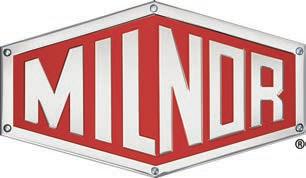
*PulseFlow®,
are
registered trademarks.
CBW® and RecircONE®
Pellerin Milnor’s
Making it all work
There comes a point in life when it’s time to stop observing, thinking, and planning and start doing.
In my business, the dreaded deadline has a way of focusing my mind. Without that specific date on the calendar when American Laundry News has to go to the printer so that you receive it by a reasonable date, I’d likely keep planning, researching, writing, rewriting, editing, looking some more, etc.
In other words, there comes a time I have to finish my work and let the issue get in your hands to read.
I know that in your laundry and linen business, there comes a time that you have to stop planning and start processing. To get down to business.
Recent global events (which shall not be named in this column) have made it difficult to, basically, make everything work together
The Editor’s Desk MATT POE
and get the goods processed for the client.

But there comes a point when you have to finish the plan, enact it … and then adjust to make everything work together.
We’re here to connect you with laundry industry information to help you make everything work. How so?
One of the major issues to come from the events-that-shall-not-be-
named is supply-chain problems. Especially when it comes to textiles.
You’ll recall that in the October issue, we ran a story on comparing textile suppliers and goods. This time, the experts who contributed to that article offer insights into what’s causing textile supply issues, how that’s affecting laundries and thoughts for the future (page 8).
Another part of the industry that has been changed is relationship building. The events that had many folks working from home altered how laundry companies are doing business.
Yes, face-to-face is slowly coming back, but likely maintaining customer relationships has changed for good with digital connections being added into the mix. See how this can all work together in the article on page 10.
These articles and more are in this issue to help you make everything work … and keep it clean, everybody! ALN
Relieving laundry pressure with humor
Pressure can be found in every job. If they pay you to do a job, it is serious business. Working for 44 years in the healthcare field, I felt the pressure to provide high-quality, dependable service every day.
But serious jobs are not incompatible with a little humor. Finding humor in real work situations helps break the tension and allows everyone to stretch their minds and bodies so they can get back to work in a more productive way.
Here are some examples of humor that I ran into during my career. There was the time that one of my workers found over one thousand dollars inside a pillowcase as they were feeding the ironer. This employee did the right thing and turned it in to their supervisor.
A day later we got a panicked call from one of the hospitals we serviced asking if we found any money in the laundry. Apparently an elderly woman in her 80s had to have a surgical procedure and did not want to leave her money at home so she brought it to the hospital and put it in her pillowcase for safekeeping. The bed had been changed and her pillowcase with the money in it was sent to the laundry.
Happily, we were able to reunite the patient with her money. The humor came in a very nice note to our staff from the administrator of the hospital in which he thanked us for not only being a highquality and dependable linen service but also very good at “laundering money.”
this key leadership role at such a critical time.”
In his journey from laundry worker to CEO, Lundergan developed a deep respect for the diverse individuals who work in academic medicine and health sciences. He is dedicated to advancing health and wellness through culture by building the highest-quality teams in the region to deliver some of the highest-quality care in the nation.
Known for his unrelenting focus on delivering world-class healthcare to patients at U of U Health, Lundergan has overseen the organization while it has been recog-
nized for major accolades.
University of Utah Hospital ranked top 10 in the country for inpatient and ambulatory care in the annual Vizient Quality and Accountability Study; top hospital in Utah for the eighth consecutive year in the U.S. News & World Report annual survey; and one of Forbes’s Best Employers for Diversity.
During the past year, Lundergan helped guide the organization through the current COVID-19 pandemic, the COVID-19 vaccination rollout and other major system events, including the opening of the Craig H. Neilsen Rehabilitation Hospital last summer.
Lundergan received a bachelor’s degree in economics at the University of Utah and a Master of Healthcare Administration at the University of Minnesota.
A married father of three boys, he and his family enjoy participating in many of Utah’s unique outdoor activities, including skiing, biking and hiking.
Competitive by nature, Lundergan once climbed Utah’s highest peak— King’s Peak—just one day before knee surgery, a testament to his focus on resiliency and success.
“I’m honored to serve in this role,” he says. “Having grown alongside U of U Health, I can honestly say that our health system and its collaboration with research, education and community engagement missions are unmatched in the nation.
“I’m proud to build on our culture of trust, honesty and mutual respect as we continue to care for our community and advance healthcare in our region and the nation.”
ALN
In another case, one of my supervisors at an in-house laundry found a bag containing the placenta from a recent birth in the OB unit. This unit was always asking for additional services and special favors, so the supervisor grabbed the bag and immediately stormed up to the unit to complain. I am sure his face reflected the anger that he felt at this careless mistake on the part of the nursing staff.
When he confronted the charge nurse and showed her what had just been found in the laundry, she inspected it, agreed it was from their unit and then with a big smile on her face said, “You know, it is not one bit cleaner than when we sent it to the laundry. You always properly clean everything we send you before you bring it back.”
The twinkle in her eye and her tone of voice totally burst his bubble and he quietly returned to the laundry.
Then there was the early morning phone call I got one day from one of my supervisors telling me she was at work and no one else had shown up. She was telling me she could not get all the work done on her own and no one had called in sick. She had woken me from a sound sleep and it took my mind a minute or two to adjust to this news.
Finally, I told her not to worry they would all be there in an hour. She asked how I could possibly know that, and I said we just switched from daylight saving time to regular time and you are an hour early. This was a standing joke between the two of us for several years.
For a number of years when I worked in Milwaukee, I played Santa for the company Christmas party. My employees thought that was a great thing for me to do. The laundry was located in a building that held, purchasing and accounting, materials management and a daycare center. The corporate office was across the street, and they would also attend the party.
My seamstresses decide I needed a custom costume for the event and the other employees decided that Santa needed some helpers, so they also designed two elf costumes for two of our smaller female employees. It was such a blast to go to the daycare center and entertain the children.
During the month of December, the employees would always ask if Santa was coming back to town. It made me a little less scary and provided us with joy during the holiday season. It was also nice to be able to share our joy with the other 500 non-laundry employees.
When some of our hospital customers heard of the tradition they asked if we were planning on delivering linen on Christmas Eve via a sleigh.
Humor helps create a great work environment. ALN
Eric Frederick served 44 years in laundry management before retiring and remains active in the industry as a laundry operations consultant. You can contact him by e-mail at elfrederick@cox.net, or by phone at 540-520-6288.
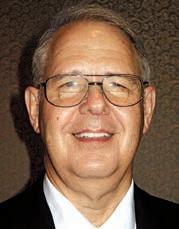

4 NOVEMBER 2021 | AMERICAN LAUNDRY NEWS www.AmericanLaundryNews.com
From
COLUMNIST AT LARGE Eric L. Frederick, RLLD
Top Stories Appearing on AmericanLaundryNews.com for the 30 Days Ending October 15 (WE) = WEB EXCLUSIVE NEWS • From Laundry to CEO • Acton Joins Tingue Management Team • Crown Uniform and Linen Adds to Washing Technology • Cintas Working to Achieve Net Zero GHG Emissions by 2050 • Milnor Sets Up Hurricane Ida Employee Relief Fund COLUMNISTS/FEATURES • Examining 2021 Hospitality Textile Shortages, Manufacturing Challenges • Lowering Costs, Improving Efficiency in OPLs • Secrets to Building Brand Power • Aiming High in Laundry and Linen Services • Working with Selected Headhunting Companies (WE) OUR SISTER WEBSITES From AmericanDrycleaner.com: • What Does the Future Hold for Dry Cleaning? • Dry Cleaners: Raise Your Prices! (Myth No. 1) From AmericanCoinOp.com: • Website Do’s and Don’ts • How to Get Your Laundromat Noticed Working Continued from Page 2
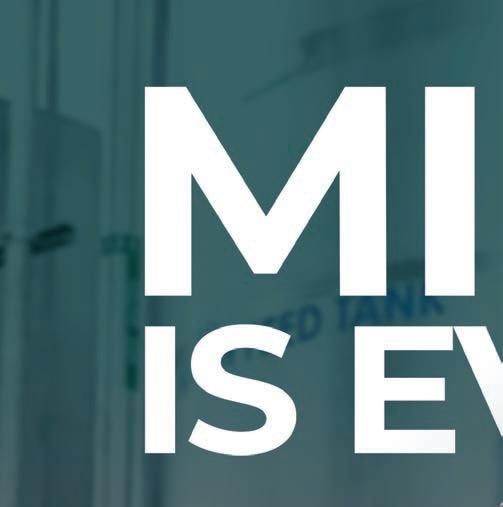
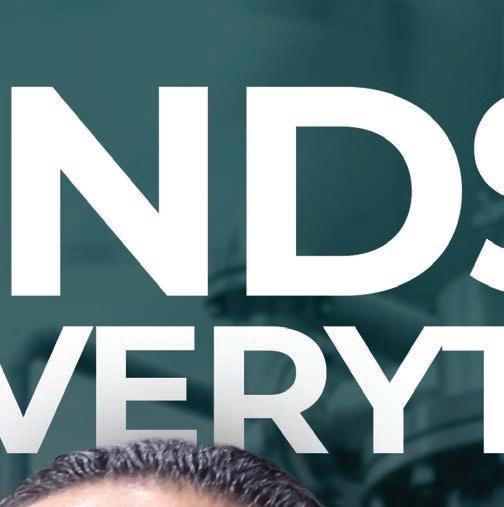
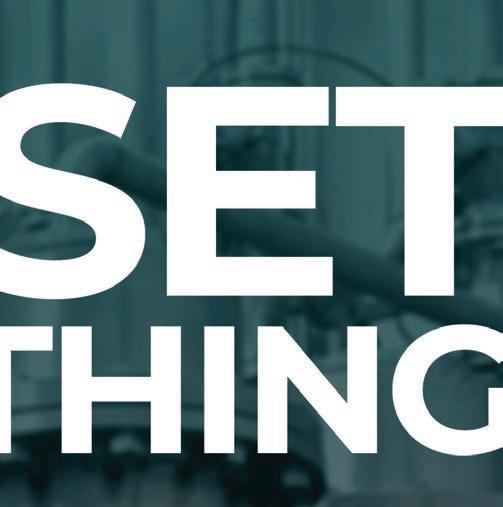
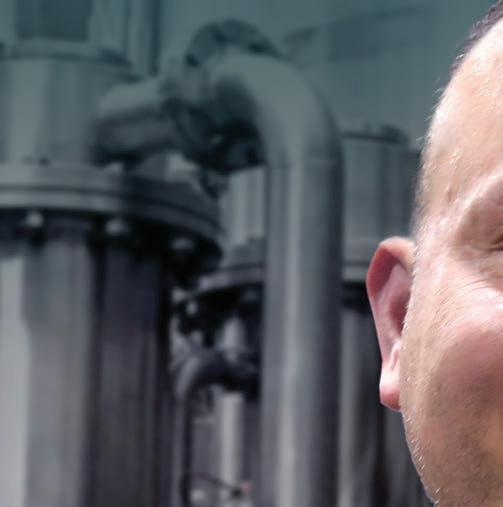






Our products are all made in the U.S.A. by in-house engineers and technicians who care about your operation’s bottom line, your environmental cleanliness, and, ultimately, customized for each customer’s satisfaction. NorchemCorp.com (800) 442-4360
put our customer’s needs at the forefront.
We
Roscoe
Founders George and John (J.P.) O’Connell met at the American Can Factory in Chicago while working together on the production line. After developing a friendship and purchasing their new laundry, they drummed up business as “gate waiters,” waiting outside of factory gates and collecting soiled overalls from workers as they clocked out of their jobs for the day.
Seeing as how this was a time when most factory workers could only afford a single overall to work in, George and John would take the soiled overalls to Roscoe for laundering and returned to the factories the following morning to deliver clean overalls to workers as they arrived at work.
Don Buik, George’s son, later purchased the business and rebranded it as The Roscoe Company. Don’s son James (Jim) Buik purchased the company in 2000 to become Roscoe’s thirdgeneration and current owner. Julia Buik, Jim’s daughter, began working at Roscoe in 2016 and is currently its IT team leader.

INNOVATION
Over the years, Roscoe has been recognized as an industry leader with innovation, technology and team member development programs.
Pioneering the transition from cotton uniforms that required pressing to synthetic uniforms that were tunnel finished, utilizing computers for billing and merchandise control, and installing the first water pre-treatment system in the nation were a few of its early contributions to the industry.
Later innovations, which include implementing a customer relationship management (CRM) system, team member training through structured OJT “skills certification,” using bar codes and RF
chips to track uniforms/mats, and a garment predictive replacement system, have kept Roscoe on the cutting edge of technology-driven customer service.
Its current staff of 70 team members has an average tenure of 15 years, with the management team averaging 25 years. The team is experienced and well-versed in the textile rental service business but is always open to suggestions on how to do things better.
CONTINUOUS IMPROVEMENT
Roscoe is all about continuous improvement as exemplified by its ISO 9001:2015 certification status, as well as being TRSA Hygienically Clean and Clean Green Certified,
and SHARP certified for adherence to operating within strict safety guidelines.
But the company has found that the best way to raise the bar and continuously improve is to listen to those who they service and to team members who process and deliver their products daily.
To generate this valuable feedback, Roscoe utilizes a multipronged approach to understanding their customers’ needs and desires by:
• Conducting annual customer satisfaction research and developing process improvement plans.
Diligently logging and analyzing trends for customer and team member calls regard-
ing service, referred to by the team as “service indicators,” to spot potential issues.
Holding “Customer Appreciation Days” to not only show its gratitude for those who wear their uniforms, but also to solicit feedback on the service.
• Circulating post-paid surveys to wearers that route directly to Roscoe’s owner.
• Conducting open book games with team members aimed at improving service.
• Rewarding team members with Roscoe Pride Points for going above and beyond.
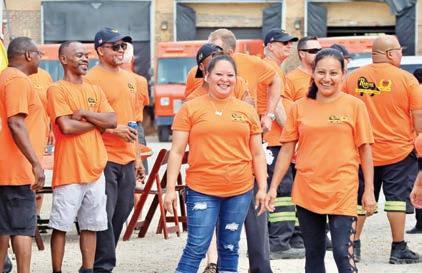
The company also solicits feedback from its team members through recognition and reward programs for contributions they make with suggestions for improvement and going above and beyond in making customers happy.
Roscoe has utilized an outsourced marketing research firm for conducting annual customer research with its customers for the last 28 consecutive years. From this research, the company identifies what’s working, but just as important is identifying opportunities for improvement.
After obtaining research results each year, team members from all functional areas of the company gather to analyze the information and incorporate this feedback into their improvement plans.
This is the first step in its annual strategic planning process that includes departmental planning worksheets, writing white papers to justify project or program implementation, development of customer-centric goals and then action plans that are implemented to drive customer satisfaction.
Roscoe receives calls from its customers and team members in the field daily. These calls are categorized and coded by type of service issue and entered into the CRM system. Each call is reviewed by Roscoe’s leadership team and service-related issues are reviewed weekly at inter-departmental
meetings through a root cause and problem resolution analysis.
Roscoe’s goal is to have zero customer issues and they are “on track” as calls continue to trend down to never-before-seen levels.
With each delivery made, Roscoe’s route service representatives have a business conversation with the customer’s primary contact to let them know what was done and to discuss potential changes to their customer’s needs.
They also host Customer Appreciation Days where Roscoe team members deliver breakfast or lunch to their customer’s facility as a show of their appreciation and to collect feedback on potential enhancements to the uniform program. They also use other tools to obtain feedback from wearers and their customer’s management team.
Open book games are a concept used with Roscoe’s production team to achieve order filling, repair and replacement goals. Team members are rewarded and recognized when they achieve goals developed to enhance customer satisfaction.
When suggestions are implemented and when team members go above and beyond to service customers, they are rewarded and recognized in The Roscoe Pride, an internal newsletter. Also, through the Pride Point Recognition Program, team members are recognized and rewarded with Pride Point certificates that may be redeemed for gift cards or corporate apparel.
These are a few of the ways that Roscoe gathers customer and team member feedback to continue raising the level of service that it provides to its customers. The company also takes great pride in providing very personalized service with immediate response to customer inquiries when required.
As Roscoe celebrates 100 years of business over the upcoming year, it would like to recognize its customers, team members and vendors all of which without, would not have made its century-long journey possible. ALN

6 NOVEMBER 2021 | AMERICAN LAUNDRY NEWS www.AmericanLaundryNews.com
Continued from Page 1
Owner Jim Buik and daughter Julia, who is the IT team leader, prepare to cut the cake to celebrate 100 years of the Roscoe Company. (Photos: Roscoe Company)
Delightful and delicious—Roscoe’s 100th anniversary cake.
Roscoe Company team members enjoy the 100th anniversary celebration.
July 30 – August 2, 2022





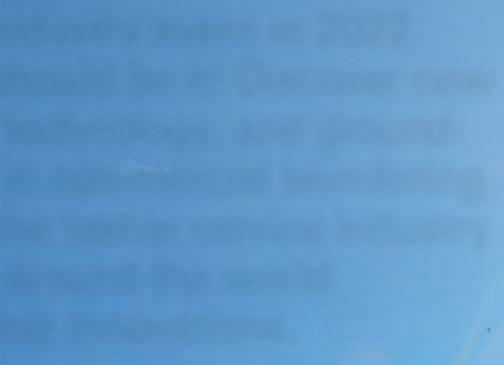
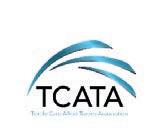





















World Congress Center

THE CLEAN SHOW IS THE #1 PLACE TO BE NEXT SUMMER!
the Floorplan
Georgia
Atlanta, Georgia USA If you attend one industry event in 2022, The Clean Show should be it! Discover new products, exciting technology, and groundbreaking research in commercial laundering, dry-cleaning, and the textile service industry as exhibitors from around the world showcase their latest innovations. Registration opens this winter. Start making your plans to attend!
Explore
www.cleanshow.com
Current state of textile supply challenges
A look at what’s causing textile supply-chain issues and what laundry operations are facing because of them
BY MATT POE, EDITOR
CHICAGO — Without the proper supply of textiles, laundry and linen services—and their customers—can’t function as well as they should.
And effects related to the pandemic have caused severe challenges when it comes to textile supply.
“The textile supply chain has never been so disrupted in recent memory,” says Alex Heiman, healthcare business unit leader of Standard Textile in Cincinnati.

“Even in the cotton crisis a decade ago, only one factor in the supply chain (raw materials) presented challenges. Now, every aspect, from raw material to manufacturing labor to freight to tariffs to distribution labor, are presenting novel challenges.”
CURRENT STATE OF TEXTILE SUPPLY
Bob Pestrak, director of linen rental for 1Concier headquartered in Miami, says that during the pandemic, the entire supply chain shut down and inventories were at a high level because the virus hit just before peak 2020 season.
“Manufacturers/distributors could not forecast when business would come back or how fast,” he points out. “Laundries started ordering at a rapid pace in the second and third quarters of 2021, and a demand shock was sent into the supply chain.”
Pestrak goes on to say that textile demand still outstrips supply, and there are shortages of basic items that were always in stock. Also, textile and shipping costs are up significantly.
“Since there are so many delays because of container shortages, capacity at the ports and domestic transportation, it’s difficult to provide reliable delivery information,” he says. “Efficiency is becoming more difficult, so we are having to be more resilient and adjust to continual change.”
Laura Lewis, business develop-
ment manager, sales and marketing, for Boca Terry in Deerfield Beach, Florida, says that manufacturing is ongoing for Boca Terry in robe production, which is helping the company maintain inventory.
“The largest issues we have are with shipping,” she shares. “Usually by the time shipments arrive to the warehouse they are pre-sold.”
Lenore Law, owner of California Textiles in Corona, California, points out that, simply put, the current state of textile supply is some companies have goods and others do not.
“After COVID-19 and right when we reopened, hoarding started by a number of companies on certain products,” she points out. “The mills were behind overseas due to COVID in the factories, so most companies, as well as my own, kept supplies or product for their existing customer base.”
Law says the cost of goods, especially high-end hotel towels and sheets, have increased in price around 18% to 20%, and items made in the United States are behind in production and taking longer to make.
“My educated guess is it will all come out in the wash sometime next year,” she predicts. “Everyone is hoping by next summer. I’m hoping by April 2022.”
MILLS, CARGO SHIPS, TRUCKS
Three factors are contributing to the current, challenging state of textile supply: mill operations, cargo ship/port issues and overthe-road trucking slowdowns.
Joe Haughey, senior vice president of sales for Star Linen USA in Moorestown, New Jersey, says that mill shutdowns during COVID severely impacted production, and significant raw material costs are now taking hold causing issues for suppliers.
Steve Gasner, vice president
of commercial laundry sales for A1 American based in Pacoima, California, shares that mills have shifted production and scheduling to high-end, profitable goods, especially retail.
“It is taking up capacity and less room, more cost, for core or value product lines,” he says. “Recently, staffing has been a huge issue, as it is a challenge with the commercial laundry space. Low vaccine rates are a concern and big issue for mill staffing and production.”
Pestrak says global mills are back in production and, for the most part, they are meeting their promised delivery dates, but price increases are occurring frequently.
When it comes to cargo ships and container shipping, Gasner says rates are at all-time highs.

“Turnaround times have slowed with the Delta-variant COVID-19,” he points out. “Throw in a few typhoons and
rates are extreme.
“Shipping firms are prioritizing service on the most lucrative routes. Bottom line: more expense and containers might not be able to ship to the most ideal port.”
Steve Kallenbach, director of market solutions for American Dawn Inc., headquartered in Los Angeles, says that millions of containers are in the wrong place in the world due to national port lockdowns, the Suez blockage and recovery reroutes.
“Additionally, bottlenecks in U.S. ports are causing delays in rerouting empty containers, due to shortages of tractors and container platform trailers in U.S. ports (due to surge), a shortage of 120,000-plus U.S. truck drivers (due to both surge and the state of U.S. trucking labor), prioritization of incoming perishable goods vs. non-perishable goods (textiles),” he points out.
Kallenbach says the cost of container ocean freight has surged from $2,000/avg/container to more than $12,000 and in some cases surged to $22,000-plus.
“Ocean freight cost increases will likely not subside until the second quarter of 2022 or beyond,” he says.
“The shipping vessel industry, no matter what country they are headquartered in, has definitely taken a very greedy approach to this entire pandemic,” Law says. “They choose to haul vessels from China for $20,000 a container versus Pakistan for $6000 to $9,000 a container.”
She points out that the backlog at some of the largest ports was
because the country opened back up too quickly, but everyone was eager to get back to business so that could not be helped.
“Then we were all hit with the horrible greed and hoarding,” Law says. “I personally called my congressional leader and I’m asking everyone to do the same and please get Congress involved as it is causing world monopolies and it is not right.”
“It would appear that they are exploiting the situation and dramatically increasing costs to help offset lost revenue during COVID,” agrees Haughey.
Finally, Gasner says that the trucking goods industry remains tight, especially with a diminishing driver pool, truck drivers retiring and new drivers entering the industry remaining low.
“Price hikes show no signs of slowing with high demand and low capacity,” he points out.
“Many delays due to short staffing and other port issues, along with surcharges, are adversely impacting already thin profit margins,” Haughey adds.
“U.S. freight carriers are also at capacity due to recovery surge, as well as the impact of online retail shipments due to a mobile business infrastructure,” says Kallenbach.
“U.S. freight carrier rates have also surged over 30%, and expected to remain high through most of 2022, based on both demand and a driver labor shortage.
“Key U.S. port labor (namely Los Angeles/Long Beach) are showing rumbles of a strike, due to perceived overworking, based
8 NOVEMBER 2021 | AMERICAN LAUNDRY NEWS www.AmericanLaundryNews.com
Mill shutdowns during COVID severely impacted production, and significant raw material costs are now taking hold causing issues for suppliers. (Image licensed by Ingram Image)
Cargo shipping is experiencing port blockages and rates continue to increase. (Image licensed by Ingram Image)
on both surge and the incoming Christmas season goods, which were ordered early due to COVID recovery.
“This holiday season will be very challenging for U.S. businesses, based on supply over demand, and this will also impact textile laundries, resellers, co-ops and OPLs.”





For trucking companies, Law points out that fuel prices have increased and also notes the lack of drivers.
“Additionally, a few trucking companies that interlined for other carriers actually closed their doors during COVID in December 2020,” she says. “Personally, we have not had any trucking company problems, except one, as we use a number of smaller companies and a few medium companies for long haul.
“I would recommend requesting that your truckers, whether a direct trucker or you use a broker, that you request no rail unless it is for a container or a very large load.
“I did put a ban on one broker and trucker that chose to go rail without telling us. Years ago, our industry traded trucker information, and I think we should do that again. Having FAK (freight all kinds) rates in place helps a lot.”
Pestrak says that bookings for deliveries are difficult to get with
ocean freight carriers, and due to labor shortages, ships cannot get into ports and truck lines cannot hire enough drivers to provide consistent and timely deliveries. Overall lead times are much longer.
“We believe this situation will continue into 2022, so we are planning ahead and increasing our order positions with mills beyond what normal sales history would tell us,” shares Pestrak. “We should see some improvement in stock levels in the fourth quarter and definitely by first quarter 2022, as business usually softens then giving us an opportunity to catch up.”






LAUNDRY INDUSTRY EFFECT

While textile suppliers are struggling with these challenges, Heiman knows that laundries are dealing with many of their own challenges, including supply shortages, product substitutions, increased prices and more.
“This is in an environment where they’re also dealing with labor shortages, overtime costs, and inelastic pricing forces with many of their healthcare customers,” he says.
Chuck Loitz, senior vice president of the institution division for Venus Group in Foothill Ranch, California, points out that due to the supply challenges, laundries
are having to use textiles longer than they would like.


“In many cases, they are forced to substitute products for the regular products that they used to order,” he says. “This can include different pocket configurations on aprons to different color choices on table linen.”
“Finding materials, period, is difficult, and it is apparent that the three-decade-long trend of textile price deflation is over, even when Asia returns to normal, whenever that will be,” points out Timothy Voit, chief marketing officer for Thomaston Mills in Wyncote, Pennsylvania.
Pestrak says that laundries would usually have preferred vendors they would buy exclusively from, if they were in stock, and some secondary vendors. They could get same-day and next-day delivery.
“Today, all manufacturers/ distributors have holes in their inventories on big-volume core items, so laundries are having to expand their sourcing model and buy from a variety of suppliers to get what they need,” he says.
“Laundries are placing orders in advance (longer-term contract orders) based on future delivery dates. This is especially true on some of the more unique textiles that might only be available from a specific vendor.”
Pestrak says this is affecting laundries in a variety of ways. Consistent quality and color matching are a challenge, plus increased supplier auditing and making decisions on how fast they can grow their business due to labor and textile shortages.
He continues, “Installations with their customers are delayed, overordering to increase inventory levels because of supply uncertainty, and having to figure out how to optimize linen usage are just some of the ways laundries have been affected.

“This is making laundries reassess the business relationships they have with suppliers.”



























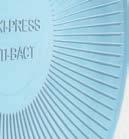



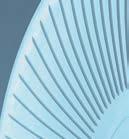
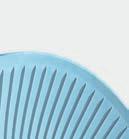






Gasner says that the effect of textile supply challenges requires laundries to have strong communication with suppliers.
“Product delivery that was taking one to three days is now two to five days with some items pushed back into back order situations,” he points out. “It really requires a planned approach, forecasting and a diversified supplier approach.

“The hospitality side is really upside down and by the time operators realize a size or item, say T-180 king sheets, are not available, the item is out in the market overall. Some allocations are evident.”

FINAL THOUGHTS
Despite the textile supply challenges, Law says the future for the textile rental industry looks bright.


“Many hospitals are now looking for qualified partners to co-op with for hospital laundries,” she says. “While the restaurant business is a bit stifled lately, it will bounce back once all the COVID panic dies down. Salons have already bounced back.”
Law goes on to say that many companies are doing more manufacturing in the United States, so the industrial side of the textile rental business will slowly get busier as well, especially dealerships and after-market car maintenance places, as that was put off during the pandemic as people were not driving as much.
“If we keep our eyes focused on business as usual and better cleaning practices as the economy continues to grow, one day we will look back and say we beat COVID, we got this, with a smile,” she says. “Learning from every experience and going forward is best, and as my daughter would say, ‘Prepare for the worst and the rest is easy.
“Our industry has been through many, many disasters over the years and has only grown and gotten stronger through the years. We will get through this, too.” ALN

www.AmericanLaundryNews.com AMERICAN LAUNDRY NEWS | NOVEMBER 2021 9
WORLD FIRST: ANTI-BACT BY MAXI-PRESS The an bacterial membrane for water extrac on presses of all common manufacturers. Ac ve germ reduc on Hohenstein cer ed incl. all MAXI-PRESS advantages WATER EXTRACTION PRESS For more informa on: (844) 447-5559 or info@maxi-press.us MAXI-PRESS.US
Laundry B2B relationship building, maintenance post-COVID-19
BY JASON WILSON AND NOAH ZUCKERMAN
CORAL SPRINGS, Fla. —
Across every industry, the days of in-person wheeling and dealing are going out of style. The pandemic has thrown their inefficiencies and excesses into focus, and cracks in the old way are becoming more visible.
Even an industry as storied and traditional as laundry cannot ignore a changing business climate, altered customer expectations, and tech-enabled, gamechanging efficiencies.
The good news is that maintaining and cultivating B2B relationships during and post-COVID-19 does not require an overhaul of operations, reinvention of a workforce or abandoning important traditions.
More than anything, it requires an open mind.
In this article, we’ll explore how the pandemic has affected the linen and uniform laundry industry’s operations and what should be done to make the most of these changes.
HOW HAS THE PANDEMIC CHANGED THINGS?
For our industry, the heightened aversion to normal interactions caused by the pandemic has been disruptive, to say the least. In-person meetings have become taboo, servicing clients has become more strenuous and less personal, and entertaining a walk-in salesperson is a great risk.
To veterans of the industry, that means less convincing power, diminished job satisfaction and lost opportunities.
Many are dealing with these changes by playing along and hoping the return to normal is just around the corner. Between the vaccine, herd immunity and two years of this strange reality, something is bound to give in to the comfortable normal we remember.
• Where the numbers are pointing
Unfortunately, prospects and clients don’t want to go back. A study conducted by business management service McKinsey & Company found that between 70-80% of B2B decision-makers prefer remote communication and digital self-service to in-person alternatives. The main rea-
sons for the preference being ease of scheduling, savings on travel expenses and safety.
Compounding these preferences is the fact that they’re strengthening.
In April of 2020, the number of decision-makers who believed digital measures were “much less” and “somewhat less” effective than traditional means hovered around 45%. By August 2020 that number dropped to 26%. Those who believed the digital measures to be “somewhat more” and “much more” effective increased from 30% to 46% in the same time period.
• What service changes do they want?
Decision-makers in businesses of all industries are looking for specific things in the postpandemic environment. Here are some of the items on their service wish-list:
Digital Self-Service—Clients increasingly don’t want to jump on the phone every time a service change is needed. If they’re in need of 50 fewer towels and four more mats next delivery, they want to sign in, press some buttons and be on to the next task.
Quick Responses—Both prospects and clients want to feel valued and their time is appreciated. Quick responses to service changes, estimate requests or complaints are the best way to demonstrate that.
For prospects, the first company to respond to their service requests will get special consideration as a quick response here likely means a quick response during service.
For clients, quick responses to queries or complaints help cement their service provider as one truly looking out for them.
Transparency—Whether it’s billing practices or the facility itself, prospects and clients want to know what’s really going on.
Having clear-cut, non-surprising billing throughout service, as well as walk-through videos showing off machinery and facility processes, goes a long way toward building trust.
Adaptability—In a business environment like the one COVID19 forced upon us, prospects and clients experienced an unprecedented need to adapt to shifting demands and regulations. They want a service provider capable of the same.
Reliability in a Storm Between supply-chain strains and shortages they’re dealing with
themselves, the one place customers and prospects want stability is their service provider. One that continues service as expected, no matter the climate, will garner high praise and continued service.
WHY KEEPING UP IS IMPORTANT
Linen and uniform laundry is a special industry with unique factors not present in other industries. We provide vital materials and services for the day-to-day operations of nearly every kind of business.
Additionally, the services we provide are fundamentally simple but complicated by volume and regulation. Lastly, many of our industry peers are legacy owners who have been doing things the same way their parents and grandparents did, save technological advancements.
This is all to say that laundry service does not play on the same field as other industries, whose products or services are regularly subject to budgetary cutbacks, extensive competition and transient relevance.
The question is, why should we abide by these cumbersome COVID-19 business model modifications? Can we not relax in the warm waters of necessity and tradition while the world works through this phase?
We can, but for how long?
• More than COVID-19 to consider
Though COVID-19 has certainly been the main driver of challenges to traditional business models the past two years, other
challenges are on the horizon. The biggest of them all is retirement.
In eight years, every single baby boomer will be 65 or older. As decision-maker retirements take hold, younger, tech-enabled professionals will take their places. They will likely not possess the same operational inclinations their predecessors did. They might even require the factors listed above when considering a potential service partner.
HOW TO KEEP UP WITH CLIENT/PROSPECT PREFERENCES
Whether it’s a pandemic-originated need or generational preference, keeping up with these changes is necessary for a successful long-term strategy. Here are some considerations to stay current.
• Perfect digital conferencing Digital conferencing can be a headache for many reasons. From connectivity issues to poor-quality technology and user error, digital conferencing is rife with difficulty.
However, it’s also absolutely the future of meetings, and optimizing it will pay off in the long run. Here’s what can be done to optimize digital conferencing:

o Designate a conferencing space and computers near a Wi-Fi router.
o Utilize headphones with attached microphones.
o Use a neutral, pleasant background.
o Ensure consistent, quality lighting.
• Utilize online services to supplement in-person interactions
Digital tools to streamline business processes have been around for decades, but their use increased drastically as the pandemic deepened. Having these services available to customers will not only improve their impression of service, but will optimize internal processes as well. Example are:
o Electronic signature programs.
o Secure online payment methods.
o Customer Relationship Management (CRM) tools.
• Quick responses via streamlined communications processes
Whether it’s a prospect reaching out for a service quote or a customer that needs account attention, relaying those messages to the team member who can help ASAP is essential. Tools to help with this include:
o Establishing a service request catalog.
o Building a centralized knowledge base.
o Using project management software.
o Creating digital task funnels.
• Supercharge Internet connection and infrastructure
Every corner of a facility does not need a crystal-clear Internet connection, but those areas where virtual meetings are to be held certainly should have one.
Optimizing data plans and internet infrastructure to provide a strong connection when necessary is essential to smooth, productive virtual meetings. To help with this:
10 NOVEMBER 2021 | AMERICAN LAUNDRY NEWS www.AmericanLaundryNews.com
Authors explore how the pandemic affected linen and uniform laundry operations and what should be done to make the most of these changes
(Image licensed by Ingram Image)
•
•
o Designate virtual meeting computers or tablets.
o Utilize business Internet plans.
o Disable HD video.
o Limit public/employee access to Wi-Fi.
Optimized website
These days, a company’s website is more than an information stockpile. It is the face of the business, the first interaction prospects have with it, and, if built properly, a major source of lead generation. To maximize its potential, it should have:
o Professional design and development.
o Search Engine Optimized content (SEO).
o Videos for facility tours, staff interviews and self-service assistance.
o Reliable website monitoring, hosting and disaster recovery.
Digital customer and prospect outreach

Getting the attention of prospects and customers can be done through various digital means with a considerable return on investment (ROI). Here are some of the most effective:
o E-mail marketing.
o Social media outreach.
o PPC advertising (pay per click).
KEEPING IT PERSONAL
One of the most valid criticisms of digitizing the linen and uniform business world is how it lacks a human touch. After all, how can a business provide personable service without people present to personalize it?
Though there are no substitutes for a firm handshake or respectful eye contact, there are digital options available that really help retain the human elements of service.
• Digital/physical cards
Do not doubt the interpersonal power of a thoughtful card. Whether it’s physical or digital, a quality, personalized card can have a tremendous impact on service perception and customer satisfaction. Whether celebrating a business milestone, a birthday or condolence for a loss, a thoughtful card can mean a lot to clients.
• Social media outreach
A shout-out on social media that draws attention to favorite clients or vendors can have many beneficial effects. It’s a good way to endear clients to a facility while strengthening their social media footprint.
Additionally, there’s a chance the client or vendor will return the favor, which is good for the business’ online presence.
• Post-sales communication
Businesses that go radio silent after making the sale are not making good impressions. Clients will only reach out if they have a problem with the service being provided.
Don’t wait for the first post-sale communication to be about problems. A call, e-mail or scheduled video call a week or two after service begins will project confidence and genuine interest in their satisfaction.
THE INDUSTRY CAN BENEFIT FROM THESE CHANGES
All of this might seem like a lot, and it is. But these changes are not as world-reshaping as they seem to be. There are, in fact, many things to look forward to during the transition.
• Jobs are not only more secure, but more valuable
If reps aren’t on the road visiting businesses in person, what do they do on the job? They talk to prospects and clients, of course! Only, instead of seeing five prospects during a day of driving from location to location, they can see eight from the comfort and safety of the facility or their own homes.
Digital conferencing for the majority of their meetings will not only make their efforts more efficient and cost-effective, but will
also make them always immediately available for questions or to bounce ideas off of.
• In-person gatherings will not go extinct

Nothing can replace the enjoyment or excitement of meeting colleagues and clients face to face at conventions or industry events, and nothing will have to! When COVID-19’s grip does loosen, and it will, people will still want to share a space with their business partners again. Only now, those meetings will be all the more special and impactful.
• Savings on travel expenses
Between airfare, vehicle expenses, lodging and meals, the expenses for travel can be considerable. Though those expenses are well worth the results, imagine achieving those same results (or better) without the expense!
• Providing service the way prospects want
These changes will disrupt aspects of the business we’re used to. But from the client’s
perspective, that’s a good thing. Even before COVID-19, most clients probably didn’t relish carving an hour out of their busy day to meet with reps and prepare for their visit. Now they can sit at their desk at a scheduled time, hash out the business and get on with their day.
THE NEW WAY IS HERE TO STAY, AND THAT’S OKAY
Between digital conferencing, purchasing ease, and self-service control, clients are finding more and more to like about the new way of doing things. That might be frustrating for those happy with the old way, but prospects and clients just aren’t there anymore.
Acknowledging this shift and capitalizing on these new preferences will strengthen laundry facilities now and position them for continued success in the future. ALN
Jason Wilson and Noah Zuckerman are members of the content team at Infinite Laundry: the exclusive agency for the linen and uniform industry. Infinite Laundry is ready to elevate your facility’s online presence. Contact us at 888-557-0262 for more information.

www.AmericanLaundryNews.com AMERICAN LAUNDRY NEWS | NOVEMBER 2021 11
Baggers by count or weight. Now you have a choice. 24,000 wash cloths per hour by weight* FULL INSPECTION Bagging by count BULK EFFICIENCY through bag weighing GENERIC ROLL OF POLY FILM no pre-made bags. www.Rennco.com/Laundry | 517.568.4121 *Based on varying levels of inspection BAR WIPES · SHOP TOWELS · MICROFIBERS · WASHCLOTHS · WET MOPS · FITTED SHEETS · ISO GOWNS ALN_Tab_half.indd 1 4/13/20 1:35 PM
Zuckerman
Wilson
PANEL OF EXPERTS
The ever-present problem: Rewash
Good day, ALN readers! I hope that this article finds you all doing extremely well. The word on the street is that the forecast for the near future for linen, medical and healthcare, is awesome and the forecast for industrial facilities is solid. A great time to be alive in the laundry business.
With growth comes expenses to be sure. One of the ways, and it is simple, is to reduce expenses by paying strict attention to and limiting rewash. Here’s how.
Most laundries handle their soil differently. Some count, inspect and sort (CIS) while others simply sort their soil by classification. Both have their plusses and minuses.
In CIS, you can identify goods in need of rewash versus goods that need to be charged for damage/abuse specific to a customer.
If damaged, you bill that customer for that damage/abuse. Even though you return the damaged item that you have billed, the customer can argue with you. This takes up a customer’s time, a route service rep’s time, plant time and creates undue stress on the relationship. You will credit the charge anyway if the customer is adamant, and you might lose the customer if you are unyielding.
Try to be fair to your customers—if the good is salvageable, rewash it. Rewash must be done in batches, and items that are still unacceptable after rewashing need to be ragged. The problem you have here is that you lose your ability to charge the customer for the non-usable item as you stuffed it into a batch of everyone’s goods.
The second approach is to simply dump and sort your soil. However, you need to ask yourself, “Am I potentially losing revenue this way although I am saving on labor and avoiding the angst associated with weekly customer confrontations as outlined above?”
The answer could be “yes” unless you have an automated solution to bill your client a charge on each delivery that cov-
ers damage and abuse. You cannot bill the charge without pre-notifying the customer of your intent and getting their agreement.
If you do not inform them, then you face the same negative consequences as outlined above in CIS. Never be afraid to talk to your customers in a reasoned and educated manner even if the topic is uncomfortable.
Michael Dodge is an accomplished process engineer with Performance Matters LLC. He states that a laundry’s average for rewash is between 3% and 7%. Note here that different laundries have different mixes of product, thus soil levels, so a range is needed.


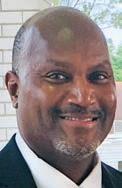
Also, pay attention to the damaged type of products, as the cost for a new mat is much more than a shop towel, and a 54 by 54 tabletop costs more than a bar towel. I know this sounds simple, but I have seen many overlook this and many that have not updated their unit loss/damage/abuse charges for years.
Beauty is in the eye of the beholder and far be it from me to tell you what your rewash definition should be. Your market and your customers define it.
Once defined, please post samples of unacceptable items by product. A written definition should accompany these physi-
cal samples. Inspect the results regularly for understanding and consistency.
Your employees and customers deserve to know what that definition is so you can maximize in this key area.

laundry. Whether you perform a manual hand sort or you use some sophisticated electronic sorting system, start the process of sorting by getting specific linen items into the properly marked soil bags, carts or bins.
Poor soil sorting and separating can lead to mistakes. One small mistake could ruin a load or multiple loads of linen and be very costly in the end.
During the initial sorting stages, items are typically classified as what they are and the level of soil they contain so they can be processed on the correct formula. In some cases, a pre-stain treatment and then processing using a special stain formula developed by a chemical supplier is necessary.
This can also aid operators in reclaiming once-stained and non-useable items back into stock. Proper formula selection and a good reclamation process can have a positive impact in the reduction of linen replacement costs.
The bottom line is laundry operators should have a plan of continual education with their employees in the soil sort and wash aisle departments. Keeping the process of proper soil sorting and formula selection at the top of their minds will have a very positive impact on the processing of linens and reduce the amount of rewash and stains.
Operators who understand and are dedicated to this will have very low rewash and stain rates and also very low replacement rates, saving them time and money in the long run.
The question of “what is an acceptable % of rewash” has been one of the most common from laundry operators, and yet it truly can be one of the easiest problems to solve.

Simply put, proper soil and linen sorting and formula selection will solve most issues for those who suffer from elevated levels of rewash. Yes, there are other factors like soil type, soil level (heavy, light, etc.) and length of time the stains have been on the linen, but to start the process off in the right direction, linens must be sorted correctly.
The soil sort room is one of the most important areas in every
It is very important to check pockets for any foreign items like pens, markers and other substances that will damage linens and cause staining. Certainly, this takes time, but taking the extra few minutes to sort can save a laundry hundreds of dollars in the end.
Whatever method of sorting you decide to use, sorting soiled linen is key and is a game-changer when it comes to the quality and cleanliness of linens.
As you know, each type of linen is unique. It typically has its own soil classification and is normally processed accordingly on a formula designed to treat it in specific ways during the wash process.
Light colors and light soiled products are not processed the same as darker colors and heavily soiled items. Cotton or terry items are typically not processed with blended linens or 100% synthetic items.
When I was managing healthcare laundry plants, our goal was to keep the combination of rewash and reclaim linen at less than 3%. Some say rewash can be 2% and reclaim can be 1%.
Rewash is linen that is in need of being washed again after the first wash. Reclaim is basically the rewashed linen that is washed as stained linen and requires special chemical treatment to get rid of the stains. Moving from the first wash to rewash and on to reclaim, the formulas become progressively harsher.
In tracking rewash, it is about comparing what must be rewashed in pounds with the total pounds washed over a period of time. While we scored it monthly, we tracked it by documenting each load that was rewashed by catego-
12 NOVEMBER 2021 | AMERICAN LAUNDRY NEWS www.AmericanLaundryNews.com
(Image licensed by Ingram Image)
“What is an acceptable level of rewash, and how does one keep track of the rewash amount in their laundry?”
Textiles
Cecil B. Lee Standard Textile, Cincinnati, Ohio
Consulting Services
Chemicals Supply Campbell Dodson Lavo Solutions LLC, Cincinnati,
David Graham Performance Matters, Fort Mill, S.C.
Ohio
ry and pounds as it occurred.
Reclaim percentage is similar in that the reclaim percentage is the total pounds reclaimed compared to total pounds washed.
The goal is to keep this total rewash/reclaim number as low as possible and to maximize useable linen from each process.
It is important that this process is easy and visual. Many times, we would use red flags on carts (or red carts) to delineate that all the linen put in this cart should be for rewash. A similar process is used for reclaim linen.
Furthermore, rewash carts are strategically placed around the plant at different processes to collect this linen as it occurs.
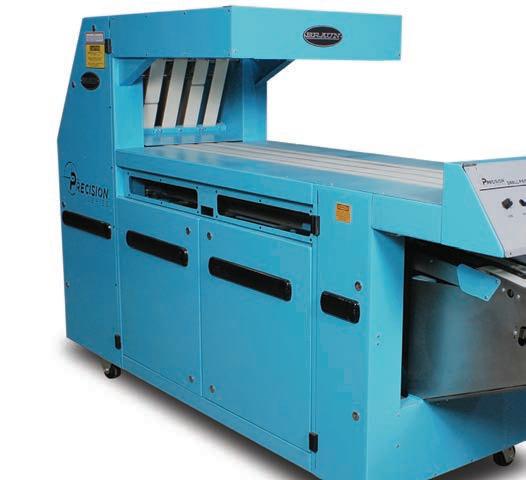
Whenever there is enough rewash linen collected, it is washed. It is tagged and processed again and the rejects from this become reclaim.
The reclaimed linen is washed and processed again. Any stained linen remaining from the reclaimed linen becomes rag out.
An example:
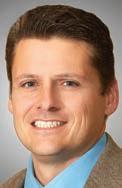
• 50,000 pounds washed in a day produced 1,500 pounds of rewash or 3% of the total washed that day.
• 1,500 pounds of rewashed linen produced 500 pounds of reclaim or 1% of the total washed. A thousand of the pounds were recovered from rewash (2%).
• Five hundred pounds (1%) of reclaimed linen will net out according to what you wash for. It will be less than 1%. This puts you at your goal of a combined <3% for the total rewash/reclaim linen combined.
Purchasing the correct linen with specifications for your laundry situation and working closely with your chemical provider are points that will help to keep the total rewash number as low as feasible.
That’s not just a rewash problem, that’s a money problem because everything you process twice is generally at a loss.
Before you run out and try to determine if you have a problem, let’s make sure you’re tracking it … all of it. Often, rewash and reclaim are thrown into the same proverbial pile. They are and should be treated as two very different entities.
Rewash should be anything that needs to be cleaned again, using the same wash formula as the first wash, before it can be shipped. It isn’t always a wash process failure. It may be items that have been dropped or hit the floor while
being folded, etc.
Reclaim is anything that has a stain or soil mark requiring a higher level of cleaning, more time, temperature, mechanical action or chemical than the first wash. As this process is usually more expensive than just a “rewash” formula, you want to make sure that you’re keeping the two separated, although I always considered these parts of that total rewash number.
I suggest that for most plants, a simple bin/barrel system where the item is processed works to accumulate this through the shift/day, and then it should be weighed and logged by location

into a program or manually. Why do that? Well, if you have a rewash problem on the smallpiece iron based on your data, that’s good to know rather than spending time looking at rewash on your large-piece iron, etc.
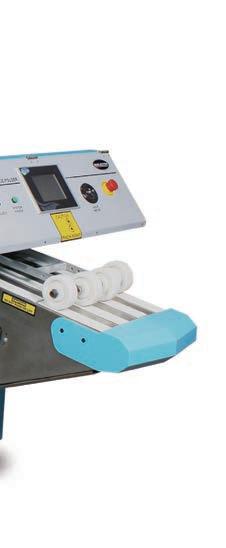
Some people have particular wash codes dedicated on their equipment and simply pull that number at the end of the shift report. That’s fine, but it rarely gives you the added detail you get by logging it.
Additionally, if it’s a wash problem, the better the data you’re able to provide your wash chemical vendor, the quicker they can
respond to help with the problem if it’s in fact a wash problem.
Lastly, and most importantly, you should have a clear quality “grading” system complete with picture examples of unacceptable product so that everyone has the same standard. Otherwise, you may find that your rewash problem is actually a quality control problem.
As with everything, I’ll remind you that the “industry standard,” is not as important as you measuring and recording your data so that you can improve on the “you standard.”
Good luck and have a great month!
ALN
•
•
•
•
•
•
Iwould expect that we will have a lot of different answers for this question, as it can vary with the type of laundry you operate. That said, I’ll give you the simple answer and work into more detail.
From 2% to 3% rewash is the number I’ve always worked toward. When you operate a laundry with that amount for a while, it’s relatively noticeable when it creeps up. If it gets beyond those numbers, I’d imagine that you’re seeing rewash everywhere throughout the plant all day.
You’re probably noticing your small washers are becoming overwhelmed, or the tunnel is running an extra half hour a day, etc.
www.AmericanLaundryNews.com AMERICAN LAUNDRY NEWS | NOVEMBER 2021 13
Equipment Manufacturing Charles Spencer G.A. Braun Inc., Syracuse, N.Y.
than
be
Folds towels up to 3 times faster
hand folding... 400 rooms of terry can
folded in less than 3 hours.
folding
Takes up less space than a
table.
in operation
Over four thousand are
world wide.
Fastest and most compact Small Piece
available!
Folder
Easy to install, operate and maintain.
3 different models available.
Will not call in sick! PRECISION SERIES® SMALL PIECE FOLDERS LABOR ISSUES? WE’VE GOT A SOLUTION! START SAVING MONEY TODAY! CALL 1.800.432.7286 BRAUN SMALL PIECE FOLDERS PAY FOR THEMSELVES IN 24 MONTHS OR LESS! gabraun.com ISO 9001:2015 Certified
•
Preventing spontaneous combustion in laundry
RIPON, Wis. — In July 2021, a garage in Madison, Wisconsin, started on fire due to improperly disposed rags and painting materials. Two months earlier, a restaurant in Manhattan, Kansas, started on fire after cooking oil self-heated and ignited on soiled towels.
The cause of both fires was spontaneous combustion.
According to a National Fire Protection Association (NFPA) fact sheet, an estimated 14,070 fires occurred annually between 2005-09 from spontaneous combustion—and laundries often are not immune from this threat.
THE FIRE TRIANGLE


Tony Berton, regional field service manager of Alliance Laundry System and chief safety officer with the Ripon fire department, says fuel, an oxidizing agent and a heat source must be present for spontaneous combustion to occur and fire to break out. Those conditions are known as the “fire triangle.”
Fuel could be clothing, towels, rags or other materials that will burn, particularly if they contain traces of contaminants such as cleaning products, oils and fats. Oxidation is the reaction of combustible material with oxygen that produces heat release, and an oxidizing agent is a substance that oxidizes another substance.
Spontaneous combustion is not an equipment problem, but rather a process problem. For example, a towel used to soak up spilled cooking oil can ignite with heat after it was dried if it wasn’t properly washed and the oil remains on the cloth.

A laundry attendant likely used the incorrect chemical formula for the fabric and type of soil, causing remnants of the contaminant to stay attached to the material during the wash.
WHAT NEEDS TO HAPPEN IN THE WASH CYCLE?
The importance of removing contaminants in the wash cycle can’t be overstressed, but you can’t remove contaminants if you don’t tell your laundry chemical company representative that you’ll be washing laundry with specific contaminants.
Spontaneous combustion can only occur if chemical compounds are embedded in the laundry and if the items are not properly washed, Berton stresses. For example, a hotel may have tiki torches that get broken and employees clean up the mess with towels, which they then toss into the laundry because they think it will be fine.
“But no one told the chemical company that you’d be washing petroleum,” he says.
 Ecolab Training Manager
Ecolab Training Manager
Andrew Everts, a certified laundry linen manager, says standard detergents won’t take out the oils and fats that are often found on hotel kitchen towels, maintenance rags and more.
“We often talk about the five factors needed to get things clean—time, temperature, chemicals, mechanical and procedure,” he shares. “You need different chemistry when you’re washing things that have oils or animal fats on them since the chemistry you use at home doesn’t have the ability to completely remove those from linen.”
START WITH A PLAN AND TRAIN EMPLOYEES
You need to have a plan about which formula to use for specific loads, Everts says, adding that you will then add or subtract building blocks such as an extra wash step with additional chemistry.
For example, kitchen rags should be washed with a greasy soil formula that calls for additional steps, warmer water temperatures and a longer washing period.
Adequately training employees is an important part of doing laundry correctly. Employees need to be able to correctly identify what type of wash they will be doing so they know which formula to use for a particular load.
But high turnover in the industry makes training difficult. Too often, someone forgets to tell the new employee that wash rags should be washed with formula nine, and they use formula two instead, Everts points out.
He adds that he finds some employees at on-premises laundries lack an understanding of the challenges different soils present, as well as an understanding of how to use or find resources to treat those soils.
There is also a resistance to using longer processes because employees want to get the job done so they can go home. The other component is adequately sorting heavy soil items (like the one used for cleaning up that tiki oil or fats). Separating these items ultimately is the first line of defense in washing under the correct cycle formula.
THE DRYER IS SELDOM AT FAULT
Assume it’s 5 p.m. and a worker isn’t quite done with a load of laundry. He or she knows they can’t leave a dryer running, so they stop the cycle, open the door and close it again, and let the laun-
dry sit. Not only will that laundry be wrinkled, but if the worker didn’t wash the laundry correctly and contaminants are still on the material, it is possible spontaneous combustion may occur.
However, the temperature of the dryer has nothing to do with spontaneous combustion, says Bill Brooks, Alliance’s director of customer solutions and business development for on-premises laundries.
“Most often, it’s after the dryer has stopped running that spontaneous combustion occurs,” he says. “It takes time to create the type of heat that starts a fire.”
stops, particularly when it is sitting in a bundle in the dryer or in a cart.
“What happens is that the dryer dries out the moisture but not the oil,” he points out. “The load sits and creates its own heat until it reaches that temperature and ignites.”
That’s why it is so important to remove the oils in the wash. Without those oils, there is little risk of spontaneous combustion.
But if a fire starts in a dryer, how can you tell if it was caused by spontaneous combustion?
First, look at the laundry that was washed and see if there is any combustible residue on the material, Berton shares.
Second, determine if the tumbler was moving. If the cycle was complete and the tumbler was not moving, spontaneous combustion likely caused the fire, particularly if linens were left sitting on top of each other while the heat increased, he says. The burn patterns in the dryer are usually proof that machines were not at fault.
out. “But the moment they open up the door, the fire goes crazy.”
Brooks says the chance of fire damage becomes even more pronounced if you empty the dryer and then leave the laundry in a pile in a plastic or polyethylene cart, both made from petroleum-based materials since those add more fuel to the fire.
HOW TO AVOID SPONTANEOUS COMBUSTION
Everts suggests three steps to prevent spontaneous combustion.
First, identify any potential fire sources, such as massage oils, that you have on your laundry on a regular basis. Second, consult with your chemical company representative and have them create a wash formula that introduces the right chemicals to thoroughly clean your wash and rid it of contaminants.
And third, educate your staff and follow through. Verify that what has been recommended is working and that it is removing the oils, and that employees are following your processes.
(ImagelicensedbyIngramImage)
John Parks, Alliance director of after sales support North America, says the chemical and type of fabric determine how soon a fire will start due to spontaneous combustion. “It can be soon to hours.”
Most dryers will dry at about 190 to 195 F, but linen won’t ignite until a minimum of 490 F is reached.
“In cases where things are igniting, it always goes back to an added element outside our control—that oxidizing agent—fats, chemicals, some sort of contamination,” says Ben Huerta, Alliance supervisor of small chassis and tumbler equipment.



The NFPA has identified 70 different oils, such as common linseed oil, coconut oil, suntan lotion and fish oil, that can provide the accelerant for spontaneous combustion. Those oils then get into the fabrics, and after being exposed to heat, start to oxidize and heat up, he says.
Brooks shares that laundry will continue to heat after a dryer
“If you see a smeary, defined line across the bottom from the flames, that tells you the tumbler was not running,” Parks says. That means spontaneous combustion was the likely cause of the fire, he adds.
WHERE DOES SPONTANEOUS COMBUSTION OCCUR?
Spontaneous combustion can occur almost anywhere, including the tumbler, laundry carts or even shelves where the folded laundry is stored, as long as the laundry is removed prior to the dryer cooldown period.
“If you don’t allow the tumbler to do its job and you’re just trying to beat the clock and get more throughput, you will have problems,” Berton says. “But that doesn’t mean that every time you pull out laundry before the cooldown period that it will spontaneous combust. Remember, you must have combustible material as well.”
Today’s dryers are built with cool-down periods to help prevent laundry from spontaneously combusting if they are not properly washed. Parks says their products go through extensive fire containment testing, so as long as people leave the dryer door closed, the fire will remain contained inside.
“People need to let the design of the product do its job, and it will eventually snuff itself out,” he points
“If you’re a hotel, you need to train your laundry workers to keep the pool towels that may have tanning lotion on them separate from the room towels,” Berton says. “Or train your workers to do maintenance rags in their own special cycle. It takes education and very good directions and training in your laundry area.”
In addition, invest in dryers that offer cool-down cycles and extended tumble cycles. Alliance Laundry Systems, for example, offers an extended tumble cycle, often referred to as an anti-wrinkle cycle. So if the dryer door is not opened two minutes after the cool-down cycle ends, the cylinder will tumble for 30 seconds every two minutes for up to an hour, Berton says.
Once the anti-wrinkle cycle is complete and if the door still hasn’t been opened and no keys have been pressed, the dryer will tumble for two minutes every 60 minutes for up to 18 hours.
Lastly, Alliance offers an option for its industrial dryers called Combustion Auto Response Equipped.
“It’s meant to try to contain combustion in a tumbler,” Berton says. “It’s hooked up to water and if it senses a certain temperature when the dryer is running or sitting idle … it will trigger a watersprinkling system that is built into the tumbler itself.”
Huerta also recommends that customers thoroughly read the manuals that come with equipment.
“It sounds so simple, but it starts with putting in, servicing and maintaining equipment as instructed,” he shares. ALN
14 NOVEMBER 2021 | AMERICAN LAUNDRY NEWS www.AmericanLaundryNews.com
To monitor its productivity and efficiency, workwear and textile services company UniFirst, which is headquartered in Wilmington, Massachusetts and serves customers throughout North America, developed a centralized, webbased application to record and track, in real-time, systems performance, energy consumption, equipment utilization and labor activity at all of its plants.
Born out of the need to bring “islands” of data together to better utilize production metrics, the proprietary UniFirst Production Monitoring (UPM) includes interfaces to all automated production systems, as well as the company’s energy management application, time and attendance/ payroll applications, and its computerized maintenance management system (CMMS).
The company says UPM presents information in both dashboard and report form, including detailed system and plant summary data that is accessible at any time by both corporate and plant decision-makers.
UniFirst shares that its corporate headquarters utilizes the same detailed, plant-specific data that is available on all of their local production floors.
Further, the company says UPM has allowed it to realize many benefits, including improved system performance, equating to a higher rate of throughput; improved equipment utilization, resulting in less energy consumption; rapid identification of process flow issues, allowing for realtime adjustments to equipment and labor; and an increase in overall productivity.
American Laundry News had the opportunity to ask Jose Nunez, UniFirst’s Senior Manager of Corporate Production, and Eric Canty, Manager of Engineering Technologies, about laundry and textile services tracking and measuring with the company’s UPM system.
What’s the first thing that comes to mind when you hear the words “tracking productivity and measuring results” regarding laundry operations?
You can’t improve what you don’t measure.
What do you consider most important in terms of tracking

and measuring?
First, you need to have accurate real-time data collection. Then, you need to use the data to create actionable tasks.

Finally, you must have full transparency of how the data is collected. In other words, the “math behind the metrics.”


How does UniFirst handle its tracking and measuring and making use of the information?

Biweekly process improvement meetings are conducted by regional leads with all their locations to review detailed data. Monthly process improvement meetings are conducted to review summary data. We also employ consolidated monthly reporting of all locations data.
Why did the company put forth the effort to create the UPM system?


UniFirst values on-time and accurate information. By using data collected from systems, machines and our employee Team Partners, we’re able to make more informed business decisions.
Whether it’s managing labor costs, flexing staff on the plant floor, determining optimal layouts, purchasing specific capital equipment or opening a new
facility in a particular region, these decisions are backed up by UPM data.
UPM sounds like a very involved system, so let’s talk usage. First, how do supervisors make use of the technology?
Training and coaching are provided by supervisors, whether it’s for improving labor efficiencies, utilization or productivity.
Supervisors balance labor across production departments by using historical data such as product mix, available staffing and equipment capacity.
What information does the system provide to employees on the floor of the laundry?
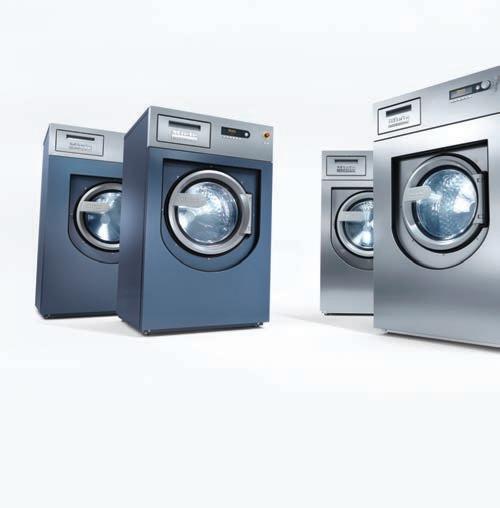
UPM provides individual employee Team Partner activity efficiencies throughout the plant, and system-level data in our wash aisle, sort/ship area and stockrooms.
Briefly share how the C-suite interacts with UPM.
Our executive-level managers benchmark local and regional performance while looking for trends and opportunities for improvement.
They also identify areas of the business where operation stan-
dards are not achieved to help determine training priorities, optimize flow and where investments should be prioritized.
Finally, they can identify leaders who make ongoing incremental improvements for possible career advancement.
How is accountability handled with the system?
Using data collected by UPM, coaching and training are provided to our employee Team Partners who require additional support.
If you were speaking with a colleague, what’s some of the top advice you’d give regarding tracking, measuring and using that information in a laundry?

We’d recommend five things: 1. Ensure accurate data is being collected.
2. Ensure that all parties have a complete understanding of the data being collected and why.
3. Define step-by-step procedures required to develop standards (SOPs).
4. Create realistic standards for benchmarks and goals.
5. Implement an ongoing process to review/refine standards as needed. ALN

www.AmericanLaundryNews.com AMERICAN LAUNDRY NEWS | NOVEMBER 2021 15
Track Continued
Miele_BMAd_4.75x6.75in_PrtOL.indd 1 4/22/21 8:41 AM
from Page 1
Rails/Conveyors, Carts, Bags

Picture this: It is the start of a busy day. Laundry is steadily coming into a facility from all different routes. Sorting operators are actively working to fill the soiled storage in the Futurail rail system. The production plan has set targets for each product.
transit and are all welded and powder coated. Also, customers can add as many shelves as needed.
veyor jams by keeping the hanger out of the conveyor tubing slot.
SEA-LION AMERICA COMPANY
Sea-lion America Company says that the movement of laundry can be highly efficient and utilize space optimally with its Overhead Rail Sling System.
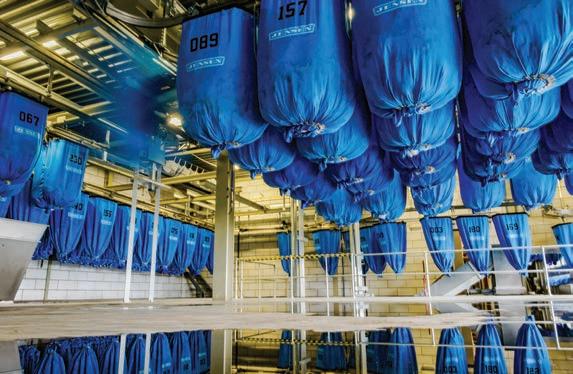
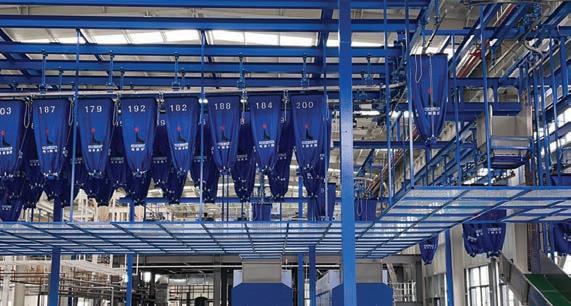
With a track constructed of industrial-grade rail and rollers, garment bags carry laundry to the correct position by elevator then slide to the unloading position via use of gravity. For safety and reliability, there are a number of stop mechanisms, anti-backsliding mechanisms and optical sensors on the tracks.
Sea-lion says that the application of multiple intelligent control techniques is possible for extended network monitoring and management. Manual mode and auto mode for loading are optional with easy operation and a high degree of automation.
Established in 1969, Sea-lion says it manufactures industrial laundry machines with a focus on intelligent automation, efficient and environmentally friendly washing, and professional finishing—complete systems solution for the high-output laundry.

www.sealionamerica.com 860-316-5563
multiple uses in a number of applications and locations. Many of the company’s standard sizes are available in eight different colors for no extra cost. Optional lids are also available in colors.
Bayhead says its frames are all-welded angle-iron with casters welded in a corner pattern for extra strength. Frames are bolted through the bodies to ensure durability.
Some sizes of carts have sides with an access notch molded in to allow easier access to stored materials.
Bayhead adds that its poly-trucks have proven themselves over many decades of use and abuse in a wide variety of applications.
www.bayheadproducts.com 603-742-3000

JENSEN-GROUP
JENSEN-GROUP says its Futurail Rail Explorer Accelerated Production Planning with Target Monitoring benefit can benefit laundries. How?
Everything seems to be moving along nicely, but do operators know if or when they will hit their production targets? What are the production percentages for each category? Where are the remaining items located within the laundry?
The company says its Futurail Rail Explorer Accelerated Production Planning with Target Monitoring can help answer these questions.
www.jensen-group.com 850-248-5264
O’DAY’S INC.
O’Day’s Inc. has been serving

The company’s Sling Carts come in a four-post design. Features can include round, square, open-end and nesting sling carts to minimize floor space when not in use, anti-fetch plates, and gas spring lift on the nesting version, featuring adjustable vertical posts for varying sling bag sizes.

Lift Table Baskets have a 16-gauge pitched back panel, a reinforced bottom and 2-inch by 2-inch welded wire mesh.

O’Day’s says that all carts are customizable to specifications to meet a laundry’s system requirements. Multiple color options and caster type/configurations are available.
www.oday.com 800-253-1160




The Leonard Transporter chain is a direct replacement for many existing systems. Leonard says it offers all of the conveyor parts, drives, curves, controls and more; most items are in stock and ready for immediate shipment. The company also carries Twist Conveyor. www.leonardautomatics.com 704-483-9316

LAVATEC LAUNDRY TECHNOLOGY
One of the key functions necessary for the smooth and successful operation of a laundry facility is an economical and efficient handling system. Lavatec says its LAVARAIL material-handling monorail system is a proven winner at facilities throughout the United States.
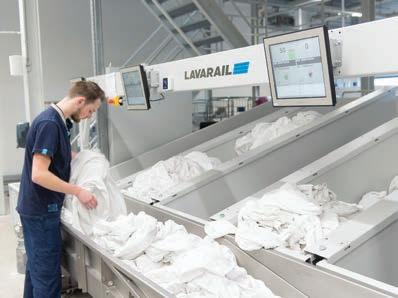
BAYHEAD PRODUCTS CORP.



Bayhead Products Corp. says its Poly-Truck line now includes 22 sizes ranging from 4 bushels up to 60 bushels.
A variety of shapes complement
the laundry industry since 1980 with carts and baskets.
The company says it uses steel for its Mat Carts, Sling Carts and Lift Table Baskets, which are used in daily production and inventory control.
Mat Carts feature heavy wall tubing and a heavy-duty bottom, according to O’Day’s. The carts have been safety-engineered to avoid tipping hazards while in
LEONARD AUTOMATICS INC.
Leonard Automatics Inc. says its Transporter Conveyor chain is constructed of quality stainless steel providing greater pull strength, lower stretch and the corrosion resistance needed for processing garments through a tunnel finisher.

The Transporter Conveyor is designed for garment transportation or any other product being transported on a hanger. The upright pendant conveyor features 3 1/8-inch and 6 ¼-inch pendant spacing.
The Leonard Transporter chain is available in “Straight Upright” style or “Helping Hand” configurations. The Helping Hand design reduces drag on the system by carrying the hanger in the saddle of the pendant; it also reduces con-
A custom-designed system, LAVARAIL is a great choice for transporting soiled and clean work, according to the company. Compatible with all equipment brands and built to last 20 years or more, the space-saving system is manufactured with stainless steel and fully enclosed rail trolleys that are protected from lint build-up. Lavatec says that compared to aluminum rails, it offers much better durability.
The company says that customers have the option to choose carts, trolleys and sorting bins, and they are available in a variety of designs, weight and volume capacities.
An added benefit is Lavatec’s user-friendly software operating system that provides sequential control, data logging, visualization and more.







www.lltusa.com 203-632-8777

16 NOVEMBER 2021 | AMERICAN LAUNDRY NEWS www.AmericanLaundryNews.com
PRODUCT SHOWCASE
COMPILED BY MATT POE, EDITOR
Products Corp.
Inc.
Sea-lion
America Company Bayhead
O’Day’s
Leonard Automatics Inc.
Lavatec Laundry Technology
JENSEN-GROUP
SOFTROL SYSTEMS
According to Softrol Systems, with Softrol Rail Systems, the laundry workflow has never been more streamlined. Each rail system is custom engineered to fit a plant with the goal to reduce time, space and labor requirements.

This fluid system increases plant efficiency and floor space by taking advantage of unutilized overhead storage space for both soil and clean goods transfer, as well as material handling for the wash aisle, the company says. It also greatly reduces labor costs by offering hardware and software designed to integrate seamlessly with facility and production needs.
Operator interface is easy to understand utilizing touchscreen SmartStations, according to Softrol. Some additional benefits include mechanical integrity through robust components (including the round steel Melonited rail), real-time production and operational status along with historical management reporting, and PM Tracker and Maintenance Modes that showcase system components with part numbers.
www.softrol.com 770-974-2700
KANNEGIESSER ETECH

Kannegiesser ETECH says its 48-plus years of industry experience is designed into every inch of its rail systems, thinking of everything from the optimal footing for workers to the easiest user experience for a laundry’s software.
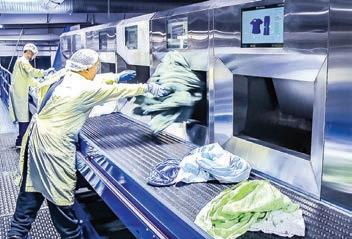
Built with Kannegiesser ETECH’s cutting-edge eRail Monorail systems and components, the company says the result is innovative, seamless, integrated
veyors, fully-automated monorail and soil goods sorting systems, vacuum transport systems, cart transport systems, sheet pickers, and all equipment in its Material Handling division is designed with safety-oriented ergonomic features and an emphasis on maximizing processing and production efficiencies.
Based on customer needs and facility logistics, Vega Systems says its material handling solutions are completely tailor-made and have ranged from a single piece of equipment to fully automated laundries resulting in a “cart-less” production flow.

www.vegasystems-group.com 855-834-2797
end-to-end rail system solutions that are shaped by experience and built around a laundry’s workflow.
Laundries can maximize floor space, minimize labor requirements and improve productivity.
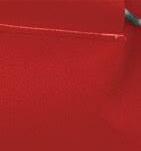
www.kannegiesser-etech.com 612-722-1366

VEGA SYSTEMS USA
Through the years, Vega Systems says it has developed material handling equipment for all areas of processing goods with a focus on logistics, safety and streamlined efficiency.
The company says its con-


COLMAC INDUSTRIES INC.
Colmac quality manufactured standard pendant and carrier chain provide garment transport through tunnel finishers and a variety of conveyor layouts, according to the company.
The proprietary material selected has been independently tested revealing yield strength of 19.7 ksi at .2% and ultimate
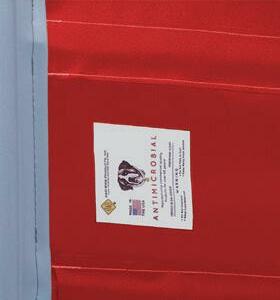
tensile strength of 29.3 ksi, Colmac shares. Both conveyor chain designs are spaced at 3.125 inches and fit new as well as existing conveyor layouts.
The unique curved design of Colmac’s carrier chain provides for smooth hanger transitions, according to the company. Purchases can be made by the single foot or in large quantities for use when replacing an entire pendant conveyor layout.
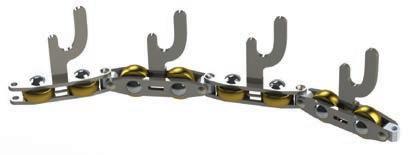


Colmac says it commits to its chain quality by offering a oneyear warranty.
Colmac Industries manufactures garment finishing equipment, as well as automated soil sorting and counting for the laundry industry. Its 200,000-squarefoot corporate office, manufacturing, and research and development campus is located in Colville, Washington.
www.colmacind.com 800-926-5622

FAIRFIELD LAUNDRY MACHINERY
Fairfield Laundry Machinery (FLM) says it makes custom carts, mostly to work with its Monorails. They are the go-between for the conveyor’s sorting system and the monorail lifting hoists.

Now more than ever, carts play a large role in the industry. There are soil P-72 carts, clean P-97 carts, rewash carts, hazmat carts and carts to load a monorail. Carts are so prevalent in laundries that the floors have yellow line walkways. Some customers require special casters that have a very low breakaway resistance and are easier to push.
FLM shares that its carts are available in different weight capacities to match the load size of the washers or dryers.

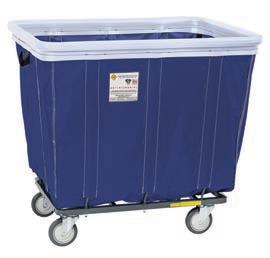
The company adds that its carts are made of steel and can take all the abuse carts are subjected to. The humble cart—no plant can run without them.
www.flmcorp.com 973-575-4330
R&B WIRE PRODUCTS INC.

R&B Wire Products Inc. says its Antimicrobial Vinyl Bumper Trucks product line is a hybrid of two manufacturing innovations exclusive to the company: Antimicrobial Vinyl Trucks and
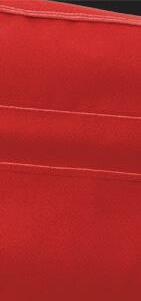


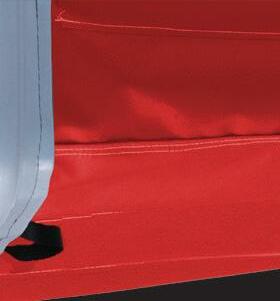
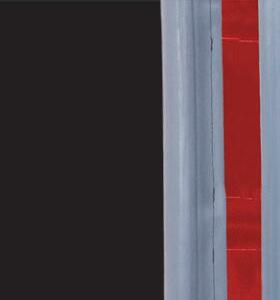

www.AmericanLaundryNews.com AMERICAN LAUNDRY NEWS | NOVEMBER 2021 17
Softrol Systems
Kannegiesser ETECH
R&B Wire Products Inc.
Fairfield Laundry Machinery
THE NEW ANTIMICROBIAL VINYL BUMPER TRUCK Protecting your employees, facilities and customers www.rbwire.com | 1-800-634-0555 Top rim sewn-on air cushion bumper helps prevent expensive dings & dents. Antimicrobial properties integrated into the air cushion bumper and vinyl material to combat microorganism growth around the clock. Available in 6-20 bushel sizes. ➢ Page 18 Colmac Industries Inc.
Vega Systems
Vinyl Bumper Trucks.
The product is designed to prevent expensive damage to walls and doors while actively inhibiting the growth of microbes on the surface of the air-cushion bumper and liner. The antimicrobial properties will endure for the life of the product, as they are incorporated into the raw materials used during the manufacturing process, the company shares.
R&B’s Antimicrobial Vinyl Bumper Trucks are available in red, navy, gray, and yellow colors, ranging in size from 6 bushels to 20 bushels.
www.rbwire.com 800-634-0555
fabrication materials: anodized aluminum (military and marine grade), wire mobile shelving, fiberglass fabrication and stainless.
The company adds that topgrade casters and soundless wheels are placed on each cart. All models are fire retardant and meet Joint Commission standards. TQ says that custom models can be easily produced without additional cost, and its engineers offer free consultation CAD drawings and trial models.
The company says cart and equipment covers for any make or model of cart are produced in its factory in staph check and other protective materials. Custom covers are also available, and TQ says attention to detail can be seen in each cover to stand the test of time.
www.tqind.com 830-401-4400
M.I.T. Poly-Cart Corp. says 8-inch casters take the strain out of pushing even a fully loaded cart, and the carts are made to order with a wide variety of colors.
Other unique products the company highlights include the Work-horse Bulk Security Truck (Model #1200) and the Utility Sanitary Cart (Models #3000 and #2000).
www.mitpolycart.com 800-234-7659
MATERIAL FLOW SYSTEMS LLC.
Material Flow Systems specializes in garment-on-hanger conveyor and storage systems for garment and industrial laundries industries.
light items.
Features of its systems include:
• Fully automated solutions for facilities producing starting from 900 pieces a day.
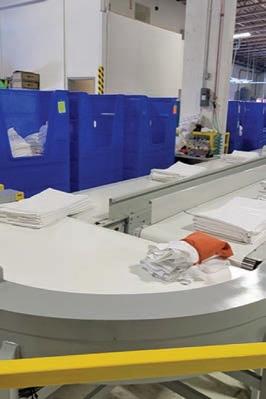
• Solutions are tailored specifically to meet the needs of customers.
• Modular solutions that allow customers to scale up to fully automated systems as business needs change. Founded in 1980, Metalprogetti grew rapidly and found success throughout the world.
laundry’s needs.
BOBCO SYSTEMS INC.
Bobco Systems Inc. has introduced its new Taco Merry-GoRound conveyor. The Taco MerryGo-Round allows for bundled, unwrapped goods to have a clean transfer every time.
The company says quiet, easy operation allows workers to build clean loads at a comfortable yet efficient pace. Customers are impressed with the efficiency, not to mention the savings on plastic wrap and the environmental friendliness they offer.
www.bobcosystems.com 763-389-3625
M.I.T. POLY-CART CORP.
The Roll-Top Security Truck, Model #1000-S, designed by M.I.T. Poly-Cart Corp., is the ultimate linen exchange cart, according to the company.
Its practical design and versatility make it the company’s most popular product. Shelves are fully adjustable, so there is no limit to how many shelves can be used and where they can be positioned.
The key unique feature is the
The company says its steel rail systems have been installed and used in many operations throughout the United States and abroad. It’s a simple design, yet Material Flow Systems says it yields the potential to dramatically and effectively change how a laundry’s internal processes coalesce and provide a solution for organized storage for the location.


The company begins with its Steel Rail, but it offers other rail products, as well as powered conveyor and sortation solutions.
Material Flow Systems has been installing solutions since 1996 providing service to its customers to keep them moving in the right direction.
www.materialflowsystems.com 909-930-6151
METALPROGETTI USA
Metalprogetti says it is an industry leader in the design and manufacture of automated systems for the sorting and handling of hanging and folded garments, as well as a wide range of other
Today, the company produces thousands of systems per year, in varying sizes and degrees of complexity, designed to move and handle garments.
In the United States alone, the company says it is responsible for moving over 2.5 million garments every day.
www.metalprogettiusa.com 602-944-2923
ROYAL BASKET TRUCKS INC.
For nearly 40 years, Royal Basket Trucks® says it has been focused on providing high-quality cart solutions to meet laundry needs, adding that its service and solutions, along with customization capabilities and modifications, set the company apart from others in the industry.
The process within laundry plants and in serving customers determines customer satisfaction. It is for this reason that Royal® says it manufactures every cart to order here in the United States.
Shelf dividers that fit Turnabout Carts are also offered. This divider system, which was specified by a customer to meet their needs, is just one example of how working with Royal® is easy and provides benefits to a company, its process and its customers, according to the company.

Additional changes are easy, the company shares. Changing casters, adding tow plates and bars, branding and labeling, selecting cart colors that identify steps in a process, routes or customers, and work ticket pockets are a few examples.
Royal® says it will work with a laundry and its customers to produce carts that meet the needs of the process and work environments.
www.royal-basket.com 800-426-6447
INDUSTRIAL BAG & SPECIALTIES INC.
TECNI-QUIP CARTS
Tecni-Quip Carts is celebrating 60 years of manufacturing carts that carry clean and soiled linen for laundries and healthcare facilities. Additionally, TQ is carrying on as a third-generation family business devoted to cart manufacturing.
The company says its Enclosed and Open models are offered in a choice of sizes and styles. TQ says its customers appreciate the selection that it offers in different
roll-top door, providing sanitary containment and pilfer-proof protection, M.I.T. Poly-Cart Corp. shares. It is also lockable. The durable white tambour door is self-storing; there are no hinges and swinging doors that interfere with storage and transport. Instead, the door rests against the top and back of the cart when open.

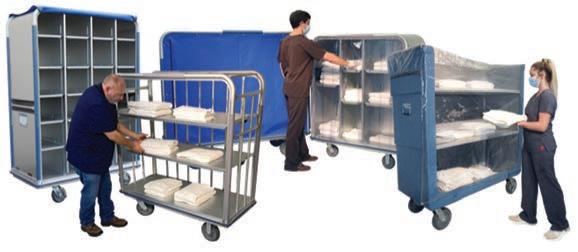
The company says there is no more replacement of cloth covers that rip and become unsightly.
The Royal® Bulk Transport Series features a variety of carts that are durably designed to improve process efficiencies, according to the company. This series of carts include the Turnabout Trucks, Bulk Poly Trucks and Security Trucks. Standard covers are available, but the company will also design a custom cover to meet a
Industrial Bag & Specialties Inc. specializes in manufacturing sling bags for industrial laundry facilities.
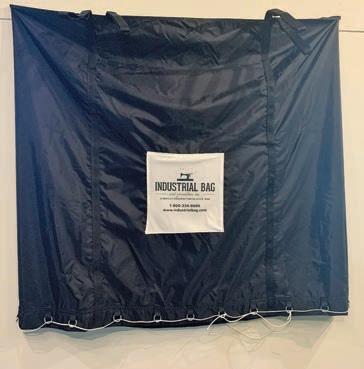
The company says slings can be customized to fit any rail system and it also offers a wide variety of custom options, such as colors and materials.
Industrial Bag has been in business for more than 75 years and over time has adapted to the industrial laundry needs of today’s current climate.
From healthcare to hospitality, whatever the needs are, Industrial Bag says it can meet and exceed a laundry’s expectations.
www.industrialbag.com 800-334-9695
18 NOVEMBER 2021 | AMERICAN LAUNDRY NEWS www.AmericanLaundryNews.com
ALN
Tecni-Quip Carts
M.I.T. Poly-Cart Corp.
Royal Basket Trucks Inc.
Industrial Bag & Specialties Inc.
Material Flow Systems LLC. Metalprogetti USA
Bobco Systems Inc.
(1), (2), (3), and (4)):X= 8,705, Y=9,024. (d) Nonrequested Distribution (By Mail and Outside the Mail). (1)Outside County Nonrequested Copies Stated on PS Form 3541 (include Sample copies, Requests Over 3 years old, Requests induced by a Premium, Bulk Sales and Requests including Association Requests, Names obtained from Business Directories, Lists, and other sources): X=3,857, Y=3,698. (2)In-County Nonrequested Copies

PARTS FOR SALE


PARTS, PARTS, PARTS
Huge stock of parts for most laundry equipment & boilers. Also traps, valves and lubricants. Overnight delivery. Steiner-Atlantic, 800-333-8883 Fax: 305-751-8390 parts@steineratlantic.com www.steineratlantic.com

PARTS & SERVICE
In need of service and or parts for all your finishing equipment manufactured by BB&D, Lavatec, Washex, and Voss? Contact Michael @ 203-232-4004 or E-Mail me: mtenhave66@yahoo.com
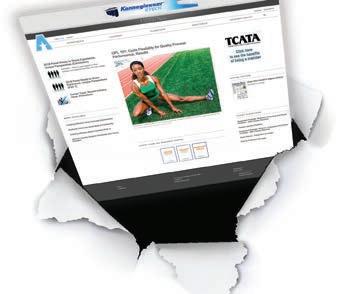

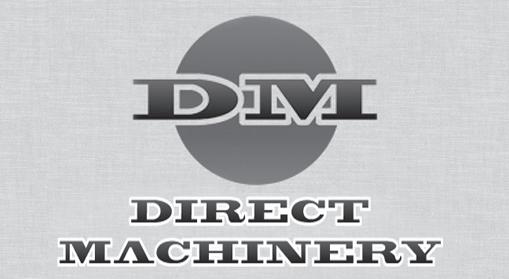
www.AmericanLaundryNews.com AMERICAN LAUNDRY NEWS | NOVEMBER 2021 19 Classified Advertising
EQUIPMENT FOR SALE 2021 CLASSIFIED RATES: One- to fivetime rate: $2.80 per word, boldface $2.85 per word. Minimum charge: $25.00 per ad. Call or write for our six- and 12-time rates. If box number is used, add cost of five (5) words. Display classified rates are available on request. All major credit cards are accepted. DEADLINE: Ads must be received by the 1st of the preceding month. For example, for a June ad, the closing date is May 1st. PAYMENT FOR CLASSIFIED ADS: Must accompany order. DESCRIPTION FOR NEW OR USED LAUNDRY EQUIPMENT, DM IS YOUR SOURCE FOR ALL YOUR NEEDS COMMERCIAL LAUNDRY CLOSING: Air Chicago 2018 & 2016 Towel Folder American Dryer AD410 (2012) American Super Sylons Excellent (2) American 6 Roll Hypro Ironer BD&D Master Eclipse 2 Lane Crossfolder 5 Lane Accumulator Braun Single Lane and Two-Lane Folders Chicago Skyline S-13 Single Lane (2006) Cleaver Brook Gas/Oil 500hp Boiler - Excellent Colmac Gas/Steam Tunnel 2001-2 Continental 90lb Soft Mount/Steam Fulton 30 HP Boiler (2003) Gas Booster Pump Gas Booster Pump Hamilton Storage Tanks 200 Gallon Jensen 3 Lane Apron Folder Jensen Olympic Bottoms Up Napkin Quarter Folder Milnor M9 42030 Centrifugal Extractor and COBVC (2) Milnor 450 Open Pocket - 68/36 Milnor 42030V6J 160 Washer (2) Milnor 100 Pound Solid Mount with New Bearing Natco 200-Gal Storage Tanks (3) (2017) Skyline folder w/Accumulator Washex/BBD Master Eclipse 2006 Unimac UW60T3 with Steam Injection For Pricing call Ron Hirsch 516.938.4300 • 516.315.7426 Hicksville, NY • www.directmachinery.com EQUIPMENT FOR SALE READY TO SHIP SELF CONTAINED OIL H IRONER 20” DIA 130” W WWW.JBILAUNDRYFOLDER.COM AMKO AMERICA INC. Sale on Hi Temp Wax Remanufactured Finishing Equipment AmkoAmerica@gmail.com 561-863-9696 DISTRIBUTOR OFFERINGS DISTRIBUTOR OFFERINGS STATEMENT OF OWNERSHIP, MANAGEMENT, AND CIRCULATION 1. Publication Title: AMERICAN LAUNDRY NEWS 2. Publication Number: 1091-9201 3. Filing Date: 9/15/21. 4. Issue Frequency: Monthly 5. Number of Issues Published Annually: 12 6. Annual Subscription Price: $46.00. 7. Complete Mailing Address of Known Office of Publication: American Trade Magazines LLC, 650 West Lake St., Suite 320, Chicago, IL 60661-1036 Cook County. Contact Person: Charles Thompson, 312-361-1700. 8. Complete Mailing Address of Headquarters or General Business Office of Publisher: American Trade Magazines LLC, 650 West Lake St., Suite 320, Chicago, IL 60661-1036 Cook County.9. Full Names and Complete Mailing Addresses of Publisher, Editor, and Managing Editor. Publisher: Charles Thompson, American Trade Magazines LLC, 650 West Lake St., Suite 320, Chicago, IL 60661-1036 Cook County. Editor: Matt Poe, American Trade Magazines LLC, 650 West Lake St., Suite 320, Chicago, IL 60661-1036 Cook County. Managing Editor: Bruce Beggs, American Trade Magazines LLC, 650 West Lake St., Suite 320, Chicago, IL 60661-1036 Cook County.10. Owner: American Trade Magazines LLC, 650 West Lake St., Suite 320, Chicago, IL 60661-1036 Cook County. Charles Thompson, American Trade Magazines LLC, 650 West Lake St., Suite 320, Chicago, IL 60661-1036 Cook County. Bruce Beggs, American Trade Magazines LLC, 650 West Lake St., Suite 320, Chicago, IL 60661-1036 Cook County. Donald Feinstein, American Trade Magazines LLC, 650 West Lake St., Suite 320, Chicago, IL 60661-1036 Cook County. Nathan Frerichs, American Trade Magazines LLC, 650 West Lake St., Suite 320, Chicago, IL 60661-1036 Cook County. John S Suhler, 200 Long Neck Point Rd., Darien, CT 06820 Fairfield County. 13. Publication Title: AMERICAN LAUNDRY NEWS 14. Issue Date for Circulation Data Below: September 2021 15. Extent and Nature of circulation: (average number of copies each issue during proceeding 12 months=”X”) (Number copies of single issue published nearest to filing date = Y”)(a)Total Number of Copies (Net press run): X=13,068,Y=13,228. b. Legitimate Paid and/or Requested Distribution (By Mail and Outside the Mail). (1)Outside County Paid/Requested Mail Subscriptions stated on PS Form 3541.(Include direct written request from recipient, telemarketing and Internet request s from recipient, paid subscriptions including nominal rate subscriptions, employer requests, advertiser’s proof copies, and exchange copies.) X= 8,705, Y=9,024. (2) In-County Paid/Requested Mail Subscriptions stated on PS Form 3541.(Include direct written request from recipient, telemarketing and Internet requests from recipient, paid subscriptions including nominal rate subscriptions, employer requests, advertiser’s proof copies, and exchange
Dealers and Carriers, Street Vendors, Counter Sales, and Other Paid or
(4)Requested Copies Distributed by Other Mail Classes
(c) Total Paid and/or Requested Circulation
of
Stated on PS Form 3541 (include Sample copies, Requests Over 3 years old, Requests induced by a Premium, Bulk Sales and Requests including Association Requests, Names obtained from Business Directories, Lists, and other sources): X=0, Y=0. (3)Nonrequested Copies Distributed Through the USPS by Other Classes of Mail (e.g. First-Class Mail, Nonrequestor Copies mailed in excess of 10% Limit mailed at Standard Mail® or Package Services Rates): X=0, Y=0. (4)Nonrequested Copies Distributed Outside the Mail (Include Pickup Stands, Trade Shows, Showrooms and Other Sources): X=6, Y=6. (e)Total Nonrequested Distribution (Sum of 15d (1), (2), (3) and (4)): X=3,863, Y=3,704. (f)Total Distribution (Sum of 15c and e): X=12,568, Y=12,728. (g)Copies not Distributed (See Instructions to Publishers #4, (page #3)):X=500, Y=500. (h)Total (Sum of 15f and g): X=13,068, Y=13,228. (i)Percent Paid and/or Requested Circulation (15c divided by f
100): X=69.3%, Y=70.9%. 16. Electronic Copy Circulation:(a) Requested and Paid Electronic Copies: X=729, Y=368 (b) Total Requested and Paid Print Copies (Line 15c) + Requested/Paid Electronic Copies (Line 16a): X=9,434, Y=9,392. (c) Total Requested Copy Distribution (Line 15f) + Requested/Paid Electronic Copies (Line 16a): X=13,291, Y=13,096. (d) Percent Paid and/or Requested Circulation (Both Print & Electronic Copies) (16b divided by 16c x 100): X=71.0%, Y=71.7%. I certify that 50% of all my distributed copies (electronic and print) are legitimate requests or paid copies. 17. Publication of Statement of Ownership for a Requester Publication is required and will be printed in the November 2021 issue of this publication. 18. Signature and Title of Editor, Publisher, Business Manager, or Owner: certify that all information furnished on this form is true and complete. I understand that anyone who furnishes false or misleading information on this form or who omits material or information requested on the form may be subject to criminal sanctions (including fines and imprisonment) and/or civil sanctions (including civil penalties): Charles Thompson, Date
Stanco Industries, Inc. Serving The Textile Trades Since 1970 800-932-3769 k for Mike or Deb KEEPING IT GREEN SINCE 1970 WE ARE LOOKING FOR THE FOLLOWING EQUIPMENT: Jensen Feeding/Folding Equipment. Kannegiesser CBW’S. Boilers - All Makes 150psi. WE BUY ENTIRE PLANTS Please visit our updated website: www.stancoind.com E-mail: buyer@stancoind.com • 3 8-Roll Super Cylons - Recently Rebuilt • 2 250 LB Lavatec Pass-Through Washers • 1 2007 Lavatec Single Stage Press • 2 2008 Milnor 130 LB Washer/Extractor • 1 2014 170 LB Speed Queen Dryer • 1 2001 Chicago King Edge • 1 2016 Milnor Centrifugal Extractor • 3 2012 6464TG Milnor System Dryers • 3 100 LB 2001 Milnor Washer/Extractors - Excellent Condition • 1 Milnor M130 Gas Dryers - Excellent Condition • 1 Chicago Tandem 18x120 Ironer - Excellent Condition 6 10-Mod Milnor 150lb Steam Tunnel w/Single Stage Press and 64058 Dryers 2016 Milnor Extractor (5510) H O T www.ineedjpequipment.com 800.925.3236 USED EQUIPMENT AVAILABLE VISIT www.AmericanLaundryNews.com LINENS FOR SALE First Quality Healthcare Textiles Gowns-Bath Blankets-Sheets All at GREAT PRICING!! Call 757-448-8589 EMPLOYMENT The Griffin Group, Inc. “Recruitment Specialist” Seeking a new CAREER? Call Deana Griffin 888-235-2365 www.thegriffingroup.cc deana@thegriffingroup.cc ® VISIT: www.AmericanLaundryNews.com American LaundryNews .com More than unique visitors monthly! 5,250 TO PLACE YOUR AD CALL DON FEINSTEIN 312-361-1682
copies.) X=0, Y=0. (3)Sales Through
Requested Distribution Outside USPS®: X=0, Y=0.
Through the USPS (e.g. First-Class Mail®): X=0, Y=0.
(Sum
15b
times
9/15/2021.

















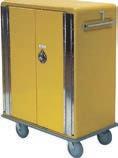



















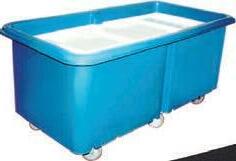

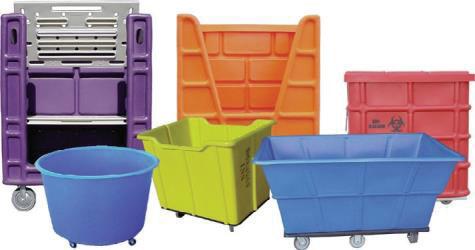









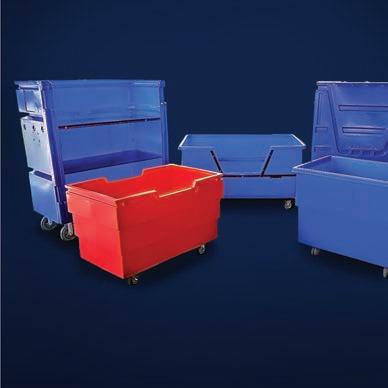


20 NOVEMBER 2021 | AMERICAN LAUNDRY NEWS www.AmericanLaundryNews.com Source Directory A convenient guide to sources of products and services APPAREL FINISHING CARTS, TRUCKS & BASKETS www.colmacind.com 800-926-5622 Tunnel Finishers Cube CFS 90 “SkinnyMac” Garment Presses Triple Connie Turbo Source Directory listings in American Laundry News are sold on an annual basis at the following rates: All Major Credit Cards Accepted 2021 Listings Regular Boldface All Caps Four Line Listing per Year $935 $1,170 $1,170 Display and additional line rates available upon request CARTS, TRUCKS & BASKETS CARTS, TRUCKS & BASKETS Quality For more information: G.S. Manufacturing 1-800-363-CART (2278) www.gsm-cart.com ...for the Long Haul. Precision built, all welded, anodized aluminum carts, specifically engineered for the extremes of loading, handling, cartwash and off-site transport in your busy laundry. Available in a wide range of models and sizes, and always to your custom requirements. Sani-Trux Carts Deliver a Larger Workload With Less Effort mcclurequotes@gmail.com www.mcclureindustries.com • 800-752-2821 80 different models • Won’t warp • Twice the life span as Poly Carts. 2000lb capacity Fire Retardant Rated ASTM E1354 • Many different options: caster upgrades, drain valves, bumpers, brakes, P-Locks, gas props, locking doors & push handles. M.I.T. POLY-CART 211 CENTRAL PARK WEST, NEW YORK, NY 10024 800-234-7659, FAX: 212-721-9022 WWW.MITPOLYCART.COM II- 800-275-2436 800-275-2436 maxi-movers.com Email:sales@maxi-movers.com OraddaSpringLiftPlatformwith clothguardedspringstooneofour manytransporttrucks! SPRINGLIFT TRUCKS Redesignedspringlift platformbringsthecontents totheworker.Offersa23cu. ft.capacityandpowdercoated weldedsteelbase. Andour7factoriesnationwide reducedeliverytimesandcost. 1 ST C L AS S C ARTS F OR 1 ST C L AS S P RO PE R TIES Lake Wales, FL 33859 Toll Free: 800.683.4116 Local: 863.638.3200 Fax: 863.638.2443 Visit DuraCast.com to explore what Dura-Cast can do for you! Get the info you need online... www.AmericanLaundryNews.com Diversified Plastics, Inc. South Carolina & Georgia • 800.768.7636 sales@dpiroto.com • dpiroto.com Durable, Long-Lasting Laundry Carts
Pellerin Milnor Corp.
P.O. Box 400, Kenner, LA 70063 504-467-9591, Fax: 504-468-3094 www.milnor.com
Pellerin Milnor Corp.








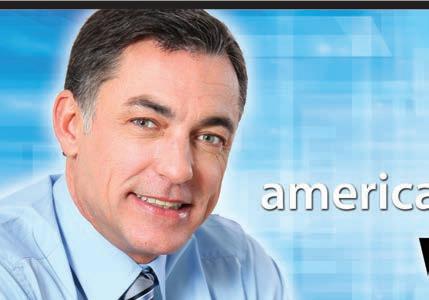



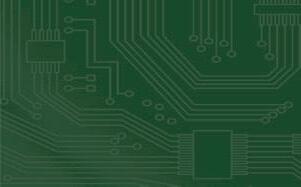






P.O. Box 400, Kenner, LA 70063 504-467-9591, Fax: 504-468-3094 www.milnor.com


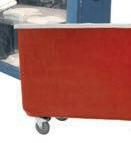






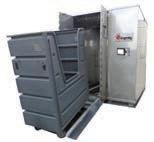







www.AmericanLaundryNews.com AMERICAN LAUNDRY NEWS | NOVEMBER 2021 21 Source Directory A convenient guide to sources of products and services
DRYERS – 100 POUNDS OR MORE
DRYERS – 100 POUNDS OR LESS DRYER BOOSTER & EXHAUST FANS www.energenics.com ENERGENICS CORPORATION TALK TO OUR DESIGN AND ENGINEERING STAFF ABOUT YOUR NEEDS 1470 Don St. • Naples, FL 34104 • 800-944-1711 ›› Our In-Line Lint Filter mounts inside, saves space! ›› OPL Duct Mounted Lint Filters 1,000 to 2,700 CFM ›› Fiberglass or Stainless Steel Dry Filters ›› Hundreds Sold Annually Source Directory listings in American Laundry News are sold on an annual basis at the following rates: All Major Credit Cards Accepted 2021 Listings Regular Boldface All Caps Four Line Listing per Year $935 $1,170 $1,170 Display and additional line rates available upon request + ELECTRONIC REPAIRS HEALTHCARE LINEN TRANSPORTS CART-WASHING SYSTEMS MCCLUR E IN D USTRI ES , IN C. e mai l: mcclurequotes@gmail.com 8 00-752-2 821 : www. mcc lure in du st ries. co m You can get it wet or get it cleaned and sanitized inside and out with Saniwash Swing down Boom for deep cleaning of carts inside & Out Chemical & UV Lighting Sanitization Up to 30 Carts per hour for proper Sanitization Uses existing utilities no remodel costs. Long lasting 20-30 years depending on usage & maintenance www.energenics.com ENERGENICS KARTWASHERS HIGH PRESSURE FOGGING - LOW WATER CONSUMPTION 1470 Don St. • Naples, FL 34104 • 800-944-1711 Designed to wash and sanitize all popular laundry carts • 30 second dwell • Disinfection by fogging • EPA registered device • Up to 40 carts/hour Fast automatic washing, sanitizing and drying insure optimum cleaning • Low water usage • Self chemical production on demand • Exceeds healthcare certifications • No residue Concentrates wash effectiveness on the cart interior LINT COLLECTORS & FILTERS COIN/TOKEN OPERATED PARTS TO PLACE YOUR AD CALL DON FEINSTEIN 312-361-1682 CONTACT US TODAY! TQind.com | 800.826.1245 | TQcarts@TQind.com Performance Driven PRECISION MADE CARTS Since 1961 americanlaundrynews www. .com
Pellerin
P.O. Box 400, Kenner, LA 70063 504-467-9591, Fax: 504-468-3094 www.milnor.com
Pellerin
Corp. P.O. Box 400, Kenner, LA 70063 504-467-9591, Fax: 504-468-3094 www.milnor.com

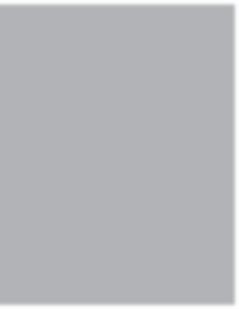

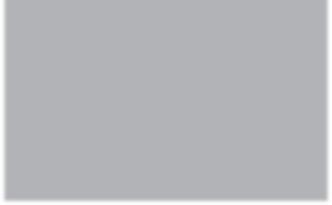












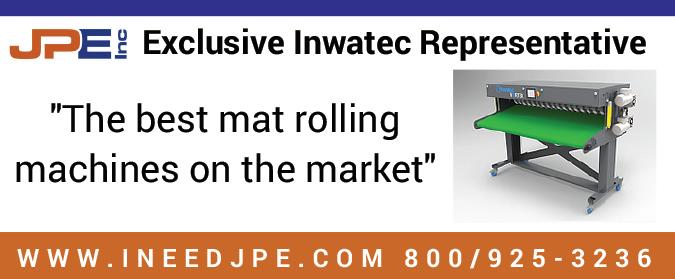

Pellerin



P.O. Box 400, Kenner, LA 70063 504-467-9591, Fax: 504-468-3094 www.milnor.com


22 NOVEMBER 2021 | AMERICAN LAUNDRY NEWS www.AmericanLaundryNews.com Source Directory A convenient guide to sources of products and services
SUPPLIES
PARTS &
Milnor Corp.
WASHERS – CONTINUOUS BATCH WASHER-EXTRACTOR– 100 POUNDS OR LESS WASHER-EXTRACTOR– 100 POUNDS OR MORE SMALL-PIECE FOLDERS MAT ROLLERS
Milnor Corp.
Milnor
Pellerin
P.O. Box 400, Kenner, LA 70063 504-467-9591, Fax: 504-468-3094 www.milnor.com
Milnor Corp.
PRESSES – EXTRACTION TUNNEL WASHER SYSTEMS SURFACE DISINFECTION Gardner Machinery Corporation P.O. Box 33818, Charlotte, NC 28233 Ph.: (704)372-3890; Fax: (704)342-0758 www.gardnermachinery.com MATERIAL HANDLING / CONVEYORS Source Directory listings in American Laundry News are sold on an annual basis at the following rates: All Major Credit Cards Accepted 2021 Listings Regular Boldface All Caps Four Line Listing per Year $935 $1,170 $1,170 Display and additional line rates available upon request Save 30% WF Plastic Bags Reduce Waste - Cut out the Middle Man - Build Profit Wash Fold Bags Factory Direct Plastic Made in Wisconsin Family Owned & Operated Blanket Bags Comforter Bags Company Page Company Page INDEX OF ADVERTISERS Clean Show 7 Direct Machinery 19 EDRO Corp. 17 GA Braun 13 The Griffin Group 19 JENSEN 15 J.P. Equipment 19 Lavatec Laundry Technology 24 MAXI-PRESS 9 Miele 15 Norchem Corp. 5 Pellerin Milnor Corp. 3 R&B Wire Products 17 Rennco LLC 11 Stanco Industries 19 www.energenics.com ENERGENICS DISINFECTION THE WORKHORSES OF YOUR DISINFECTION PROGRAM 1470 Don St. • Naples, FL 34104 • 800-944-1711 • “Quick Kill” Hypochlorous Generator • “UV-MAX” Ultraviolet Disinfector • “UV-Conveyor” Ultraviolet Conveyor Belts www.AmericanLaundryNews.com LINT COLLECTORS & FILTERS 800-826-1245 • cleancyclesystems.com CCS MODELS AVAILABLE FOR ANY SIZE OF LAUNDRY OPERATION OPL Series Utility Free DLF Models Automatic Blow Down LINT LASSO In-Line Lint Filter
Venus Group earns Sewn Products Reshoring Award
WAKE FOREST, N.C. — Venus Group, a manufacturer and supplier of table linens, including napkins and tabletops, was presented with the Cut & Sew Manufacturers Award from the Sewn Products National Reshoring Award competition on Sept. 17, organizers report.
The competition was launched in 2018 by SEAMS, the Association and Voice of the U.S. Sewn Products Industry, and the Reshoring Initiative®, which helps manufacturers realize that local production, in some cases, reduces their total cost of ownership of purchased products and tooling, also training suppliers how to sell against lower-priced offshore competitors.
Before 2015, organizers say Venus Group manufactured approximately 864,000/month in Mexico and the Dominican Republic and today manufactures 1,000,000/month in Fort Lawn, South Carolina, replacing all offshore work and creating 42 jobs in the United States.
In addition, the competition presented Soft-Tex International the Brand Award for its fiber and hybrid pillows, memory foam pillows and mattress topper products. Soft-Tex went through a large reshoring initiative in 2020 and 2021 moving from China to the United States.
Organizers of the competition say the winners represent the progressive companies focused on the Made in America movement supporting the U.S. economy and bringing production of goods back to the country.
“SEAMS is thrilled to partner on this award and be able to celebrate our winners at our annual Fall Conference with their peers and colleagues in attendance after a very difficult year in 2020,” says Will Duncan, executive director of SEAMS.
“Our membership not only continues to grow but grows stronger. These winners represent all of our members focused on the Made in America Movement with SEAMS.”
Christeyns unveils new website
EAST BRIDGEWATER, Mass. — Christeyns, a Belgian hygiene solutions company that is expanding operations in the United States, has introduced an elaborate new website.
The company says the fresh design can be viewed in seven languages and provides textile care professionals easier access to its laundry chemistry solutions and services.
“Our goal was to provide online visitors with an easier method to learn more about our company, both from a global perspective and what we do here in the United States,” says Rudi Moors, president of Christeyns USA. “All of our information was updated to provide a concise picture of the products we produce and the services we offer, especially for the commercial
and on-premises laundry market.
“Anyone not familiar with Christeyns will now have a better sense of how we can help them with the present and future challenges they face.”
The company says the website establishes Christeyns’ presence across a broad range of industries and communicates the company’s unique offerings. Many of the capabilities listed under the “Solutions” button speak to the challenges that directly impact commercial laundry operations.
Online visitors can find information about integrated washing concepts for tunnel and conventional washers to produce optimal results. It also provides details about the value of accurate dosing equipment, methods to experience savings on water and energy costs, and the importance of having the right management information systems.
“Commercial laundry operations across the United States today are being challenged like no other previous time,” says Moors. “They are dealing with everything from slimmer bottom-line margins and the ongoing issues related to the COVID-19 pandemic to the current labor shortage of finding and retaining qualified workers.
“Another important aspect we offer involves the remarkable education and training programs we have developed through the Christeyns Academy. The website gives visitors the option to delve further into that area. Combined with the expert service we provide our customers, they will learn how Christeyns is well prepared to help their operations succeed.”
Cintas working to achieve Net Zero GHG emissions by 2050
CINCINNATI — Cintas Corp. has announced its ambition to achieve Net Zero greenhouse gas (GHG) emissions by 2050.
The company reports it is also in the midst of a comprehen-
sive, enterprise-wide review of its business model as it relates to environmental, social and governance (ESG) opportunities, improvements, and efficiencies.
Cintas says it has been built on sustainable business practices, and the continuous improvement of its sustainability measures has been key to the company’s operational success over the years.
As its business review continues for the next 12-18 months, Cintas expects to better define its ESG journey, including identifying strategies to reduce its Scope 1 and 2 GHG emissions and potential avenues to reduce Scope 3 GHG emissions from its supply chain.
The review will also focus on opportunities to further reduce its overall environmental impact through continued reductions in energy, water, raw materials and waste throughout its business.
“Cintas was founded on a sustainable business model and has grown to a $7-plus billion company by recycling, reducing, and reusing our products and materials for our customers, and helping them reduce their environmental impact,” says Todd Schneider, president and CEO.
“Our corporate culture is based on doing what’s right and challenging ourselves to be better, so we view announcing our ambition to reach Net Zero GHG emissions by 2050 as a natural extension of our culture and how we conduct our business.”
Cintas’ organizational business review began in 2019 when the company implemented processes to help it start publicly reporting on its ESG priorities—including its environmental impacts—and now continues with due diligence and the analysis of historic data.
The results of the company’s ongoing business review will guide its ESG journey, and it has established the structure and processes to take it into the future.
In August 2021, Cintas appointed Christy Nageleisen as its new vice president of ESG and chief compliance officer and reorganized several departments to create a new risk and compliance department. This new department will work cross-functionally under Nageleisen as she develops and leads the company’s ESG-related strategy, activities, monitoring and compliance.
Cintas says the strategy is expected to include further environmental impact improvements, as well as opportunities related to diversity and inclusion, human capital, safety and health, and governance objectives, among other areas.
In November 2021, Cintas expects to release its 2021 ESG Report, which will further detail the company’s efforts in corporate responsibility, environmental stewardship, social initiatives and its governance strategy.
Crown Uniform and Linen adds to washing technology
BROCKTON, Mass. — Crown Uniform and Linen, a uniform/linen service based in New England, reports that it has invested in OMNI Solutions’ SULAOS Smart Ultraviolet Light Advanced Oxidation System.
“Our mission is to be the most sustainable commercial laundry in the industry,” says George Spilios, president of Crown.
“We are committed to any green initiatives that lead to a better use of our natural resources.”
The OMNI System uses a combination of methods involving ultraviolet light to destroy contaminants.
Crown says the system is only available in seven other facilities across the country, and no other providers within New England (as of February 2021).
Crown is a Healthcare Laundry Accreditation Council (HLAC) accredited and Hygienically Clean certified laundry, and the company says the new OMNI system takes washing technology a step further in safety and linen care, working at the highest level of cleanliness and protection. The company goes on to say that the system ensures no harmful byproduct is created, and it removes organic matter and destroys pathogens.
Info: 863-660-5350
17-18TRSA
Texcare Asia & China Laundry Expo (TXCA & CLE) Shanghai, China Info:+86-021-6160-1155 ALN

Crown says that with this process, the linens are left looking brighter and feeling softer.
This latest advancement is part of a broader investment in green initiatives from Crown Uniform and Linen, sharing that the OMNI system significantly reduces water and natural gas usage in the cleaning process, making it a more sustainable and safe solution.

www.AmericanLaundryNews.com AMERICAN LAUNDRY NEWS | NOVEMBER 2021 23
ALN
Reusable Textile Association
Christeyns’ new website highlights laundry solutions. ( Photo: Christeyns)
November 3 American
Virtual Speaker Series: Lessons from COVID19—How to Win and Maintain Conversions Mission, Kan.
3-5 Association for Linen Management
2021 IMPACT Conference Greenville, S.C. Info: 859-624-0177 17 American Laundry News
Podcast: Laundry Safety Inspection Chicago, Ill. Info: 312-361-1700
Reusable Textile Association
10th Annual Healthcare Conference & Exchange Plano, Texas Info: 703-519-0029 December 8 American
Virtual Speaker Series: How Practice Greenhealth’s 900 Member Hospitals Position Reusable Textiles Mission, Kan. Info: 863-660-5350
22-24 Messe Frankfurt
Calendar









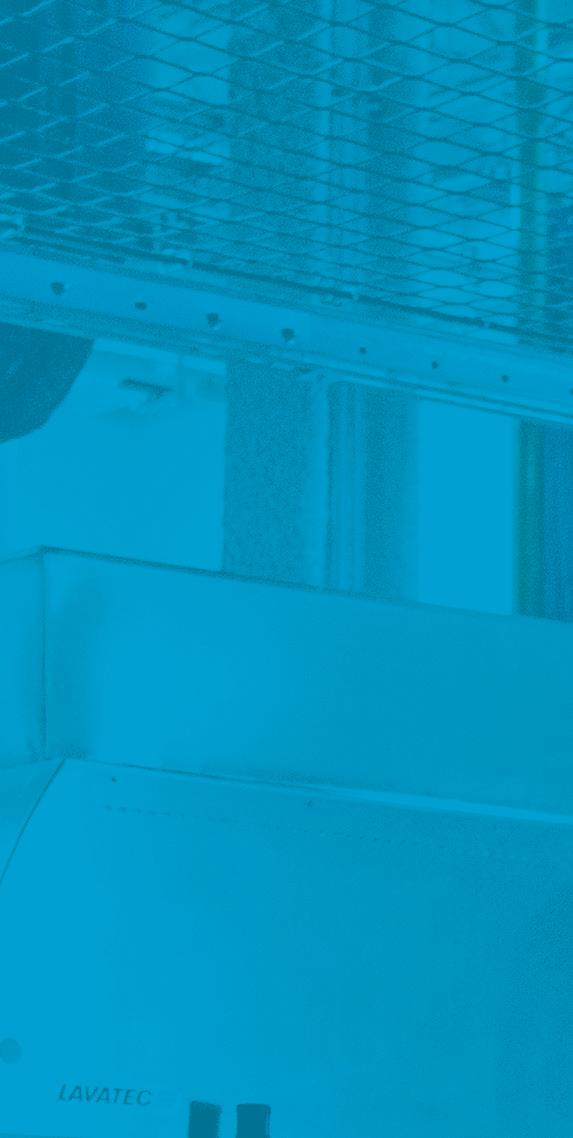
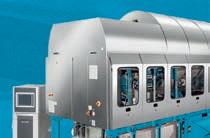












































































































































 Ecolab Training Manager
Ecolab Training Manager


















































































































































































